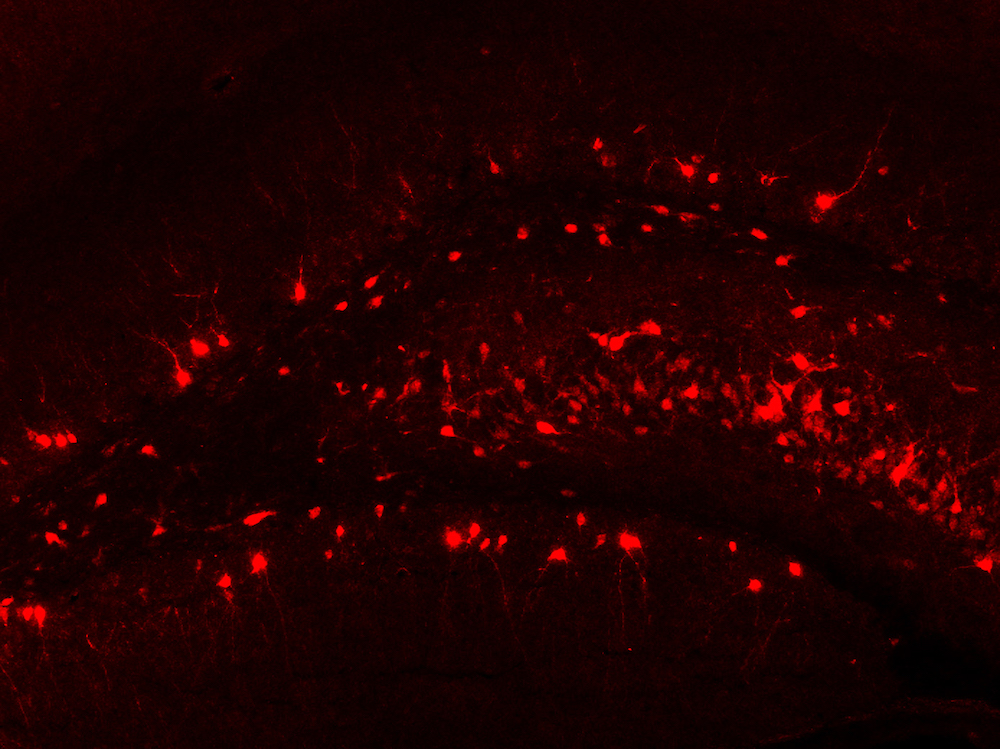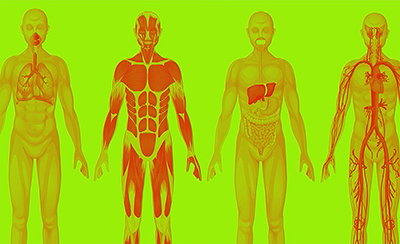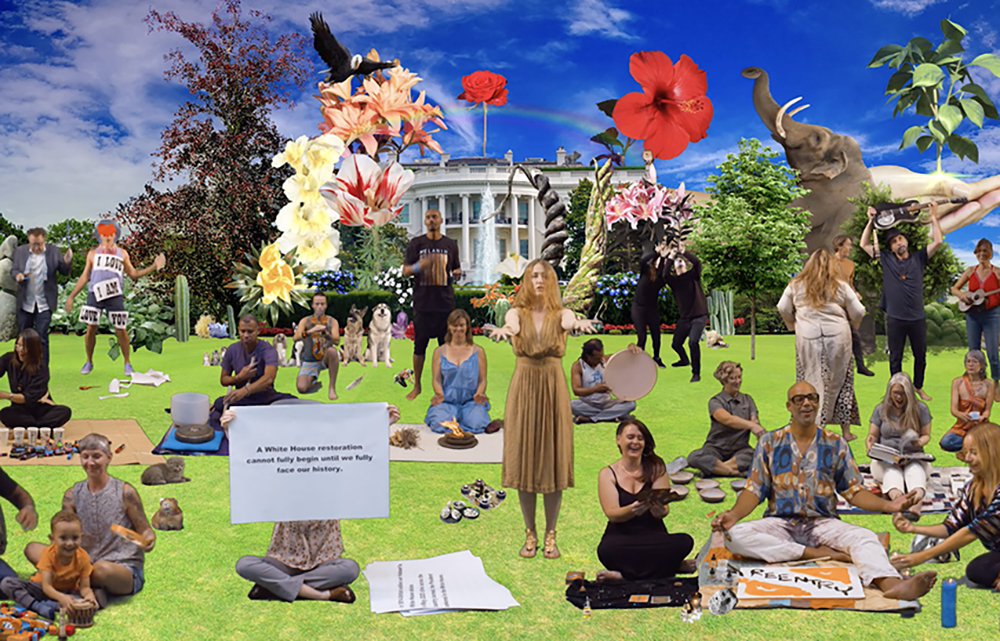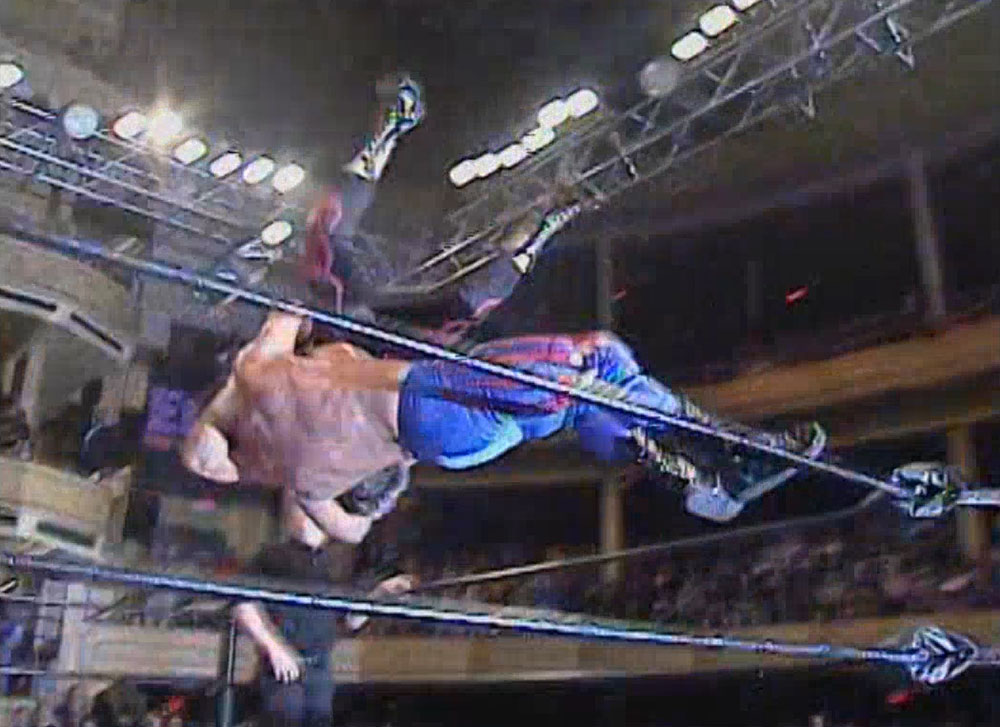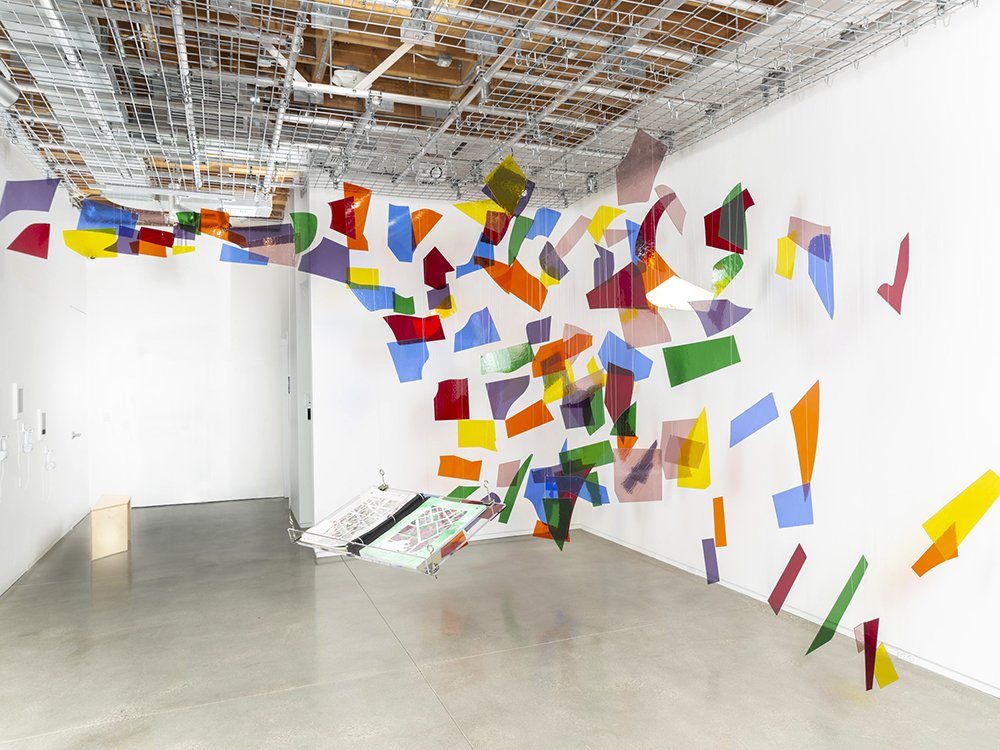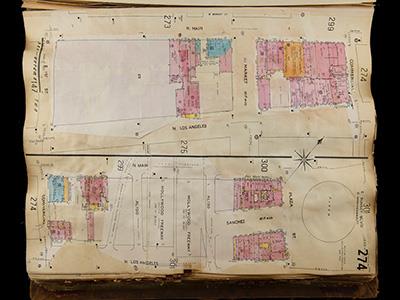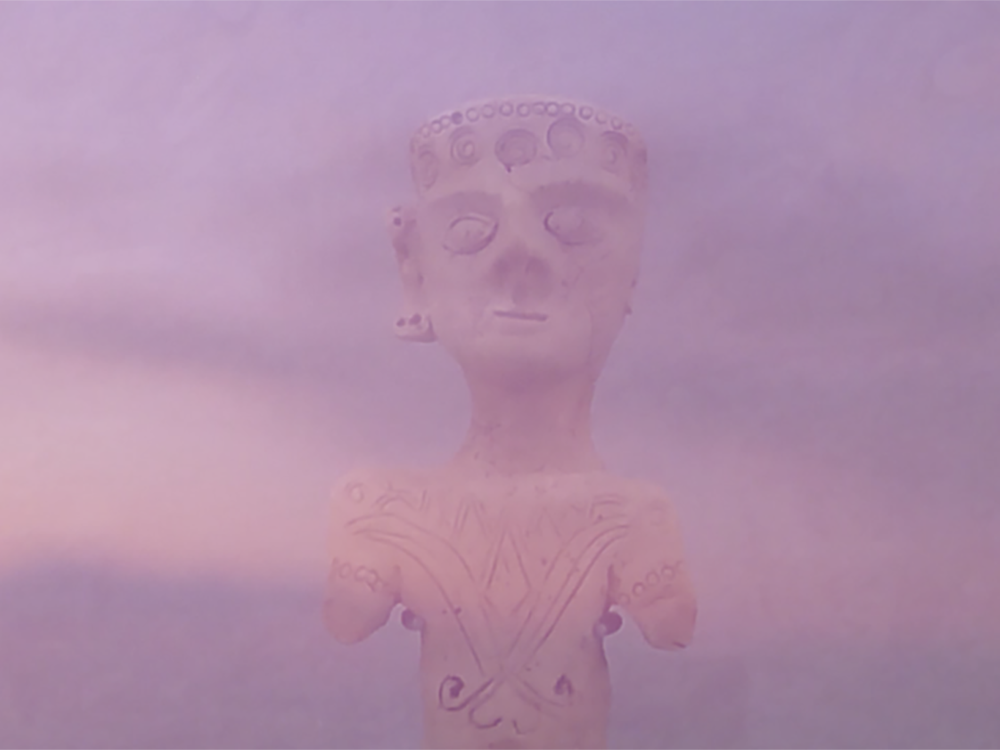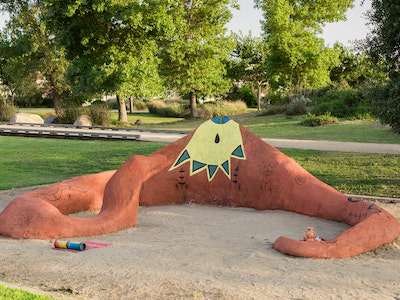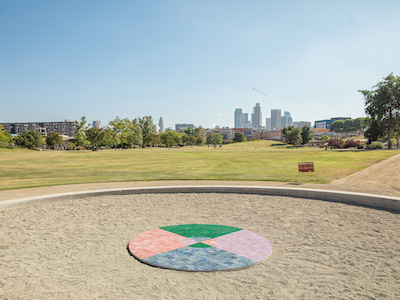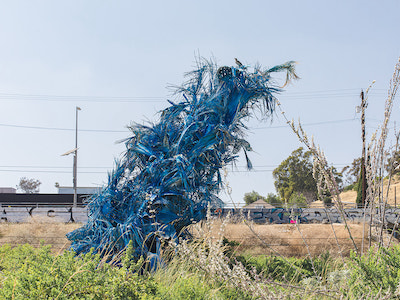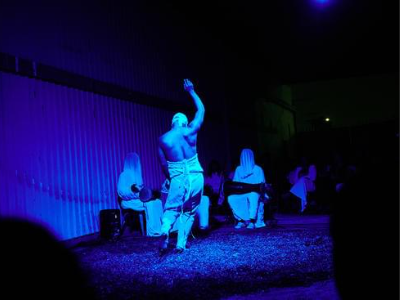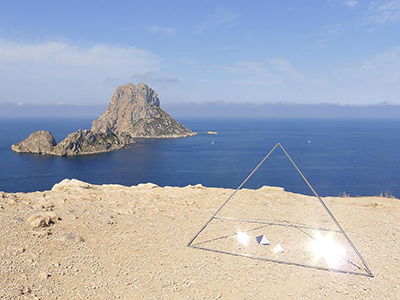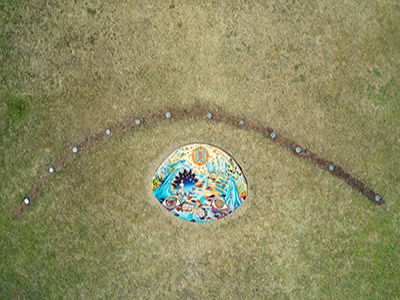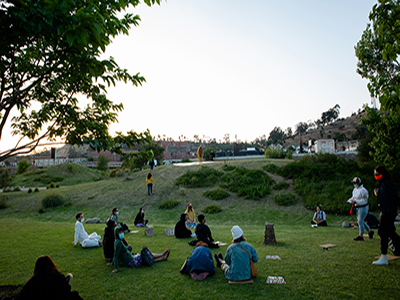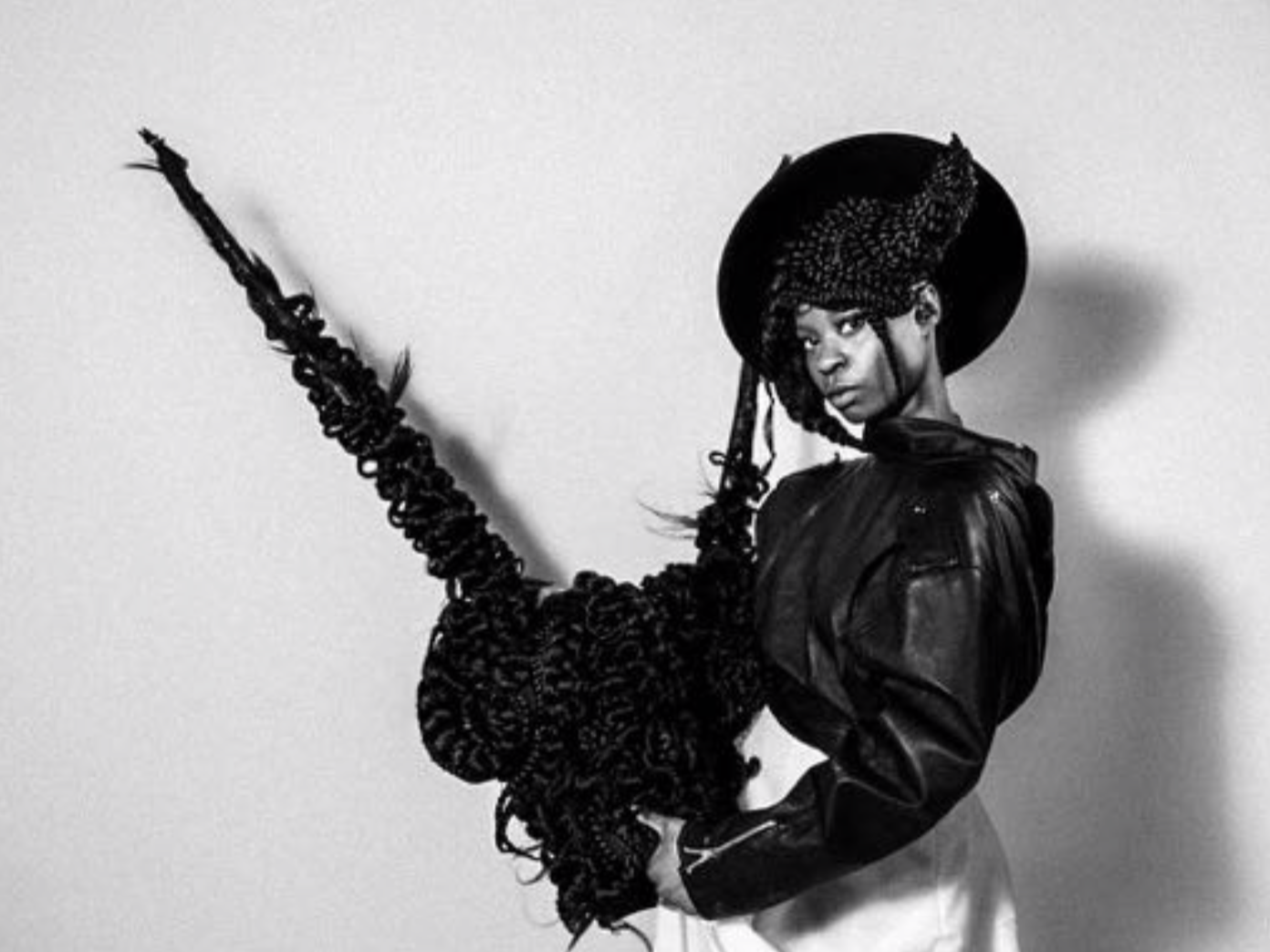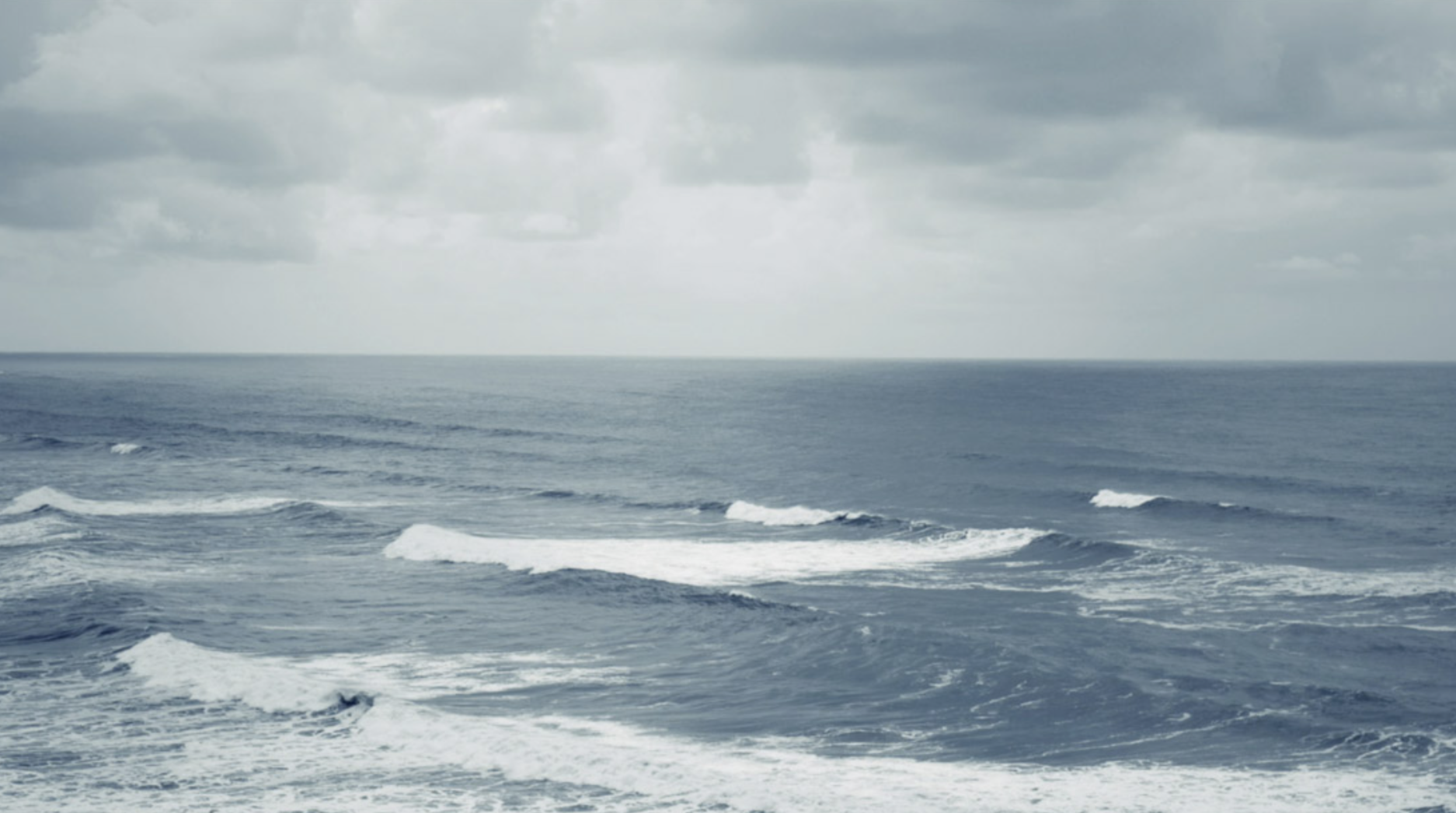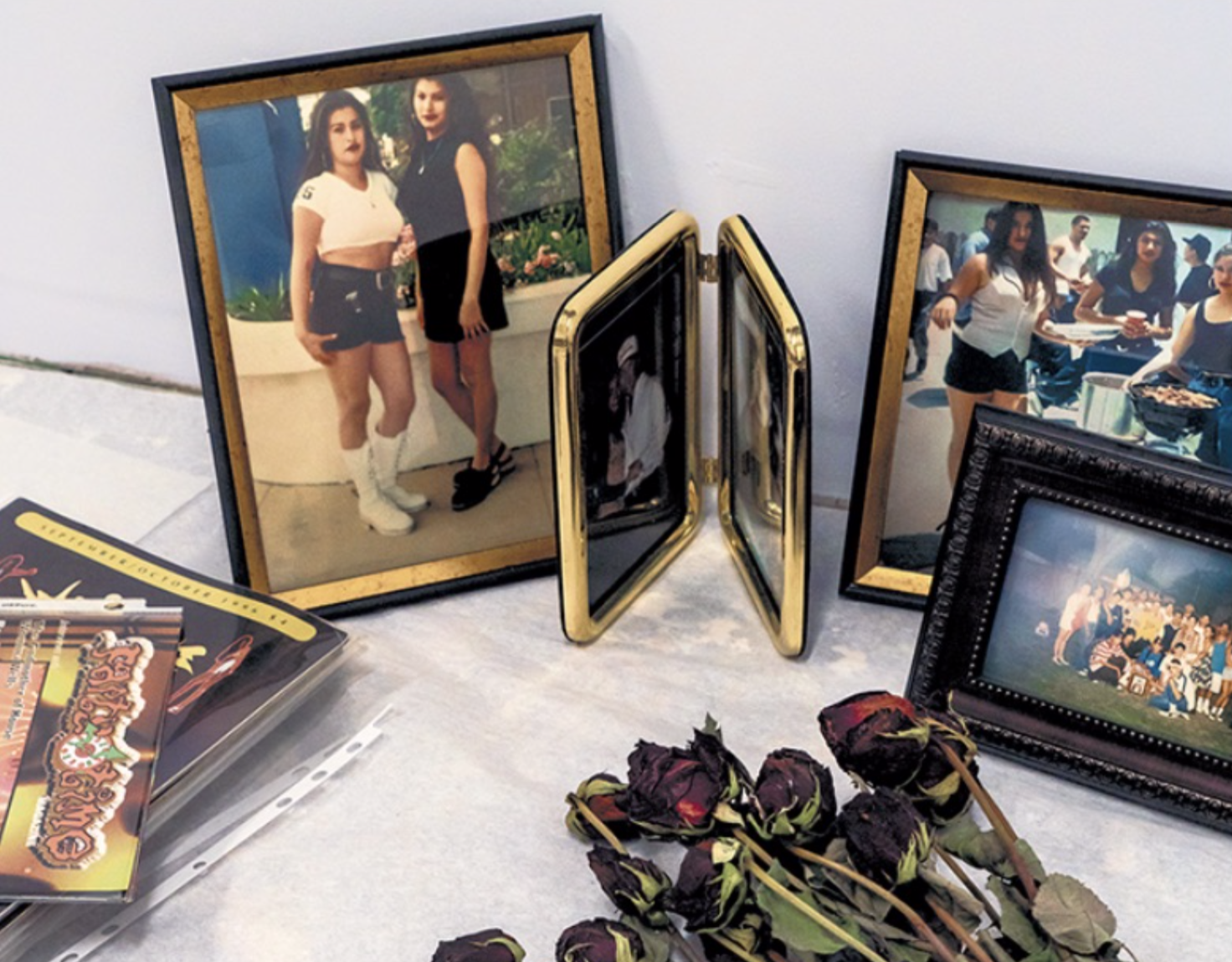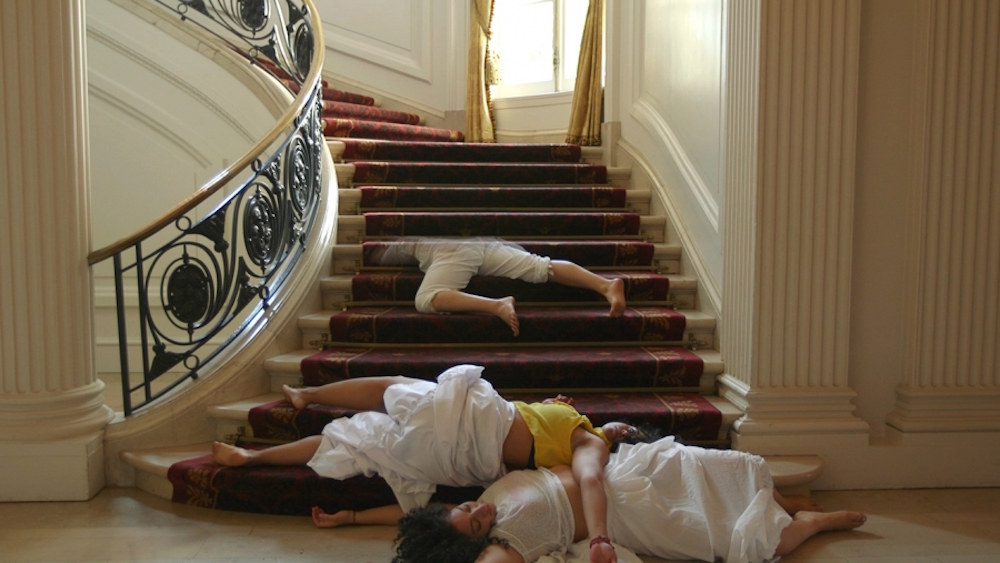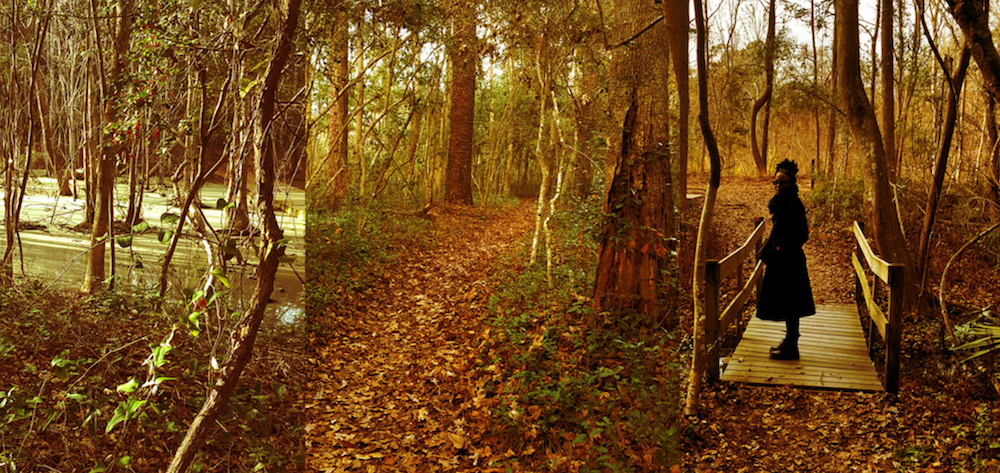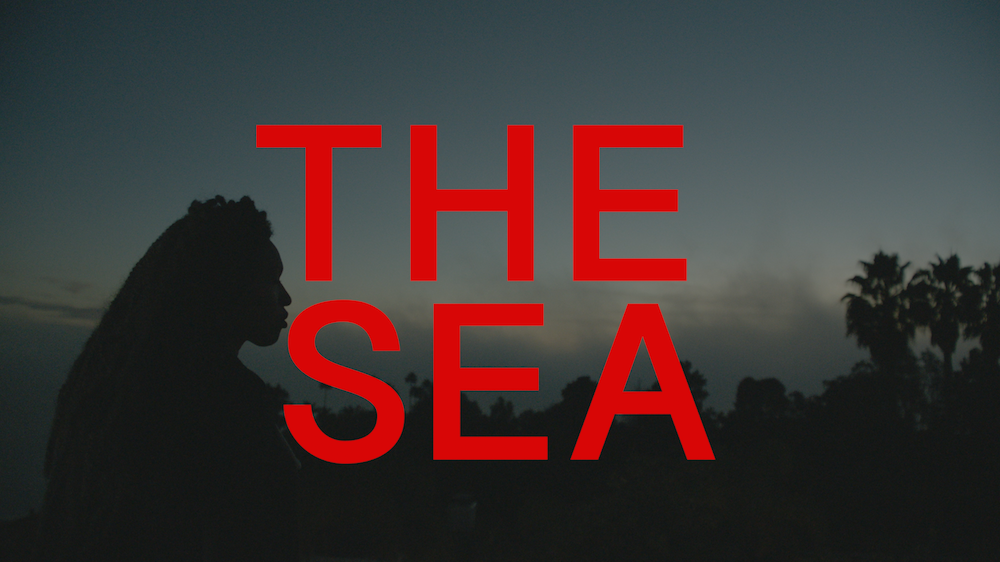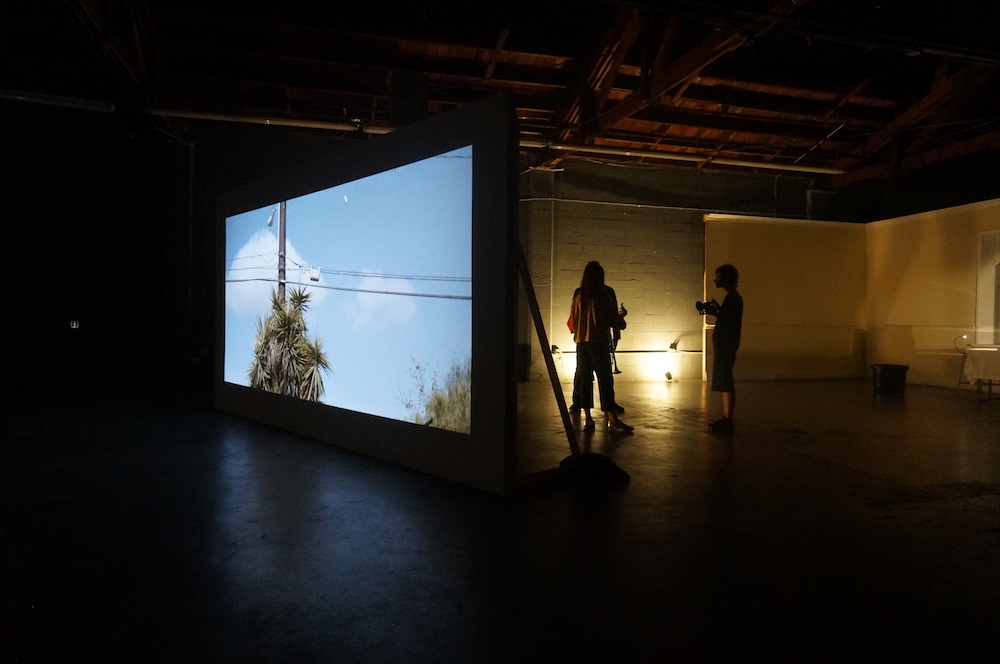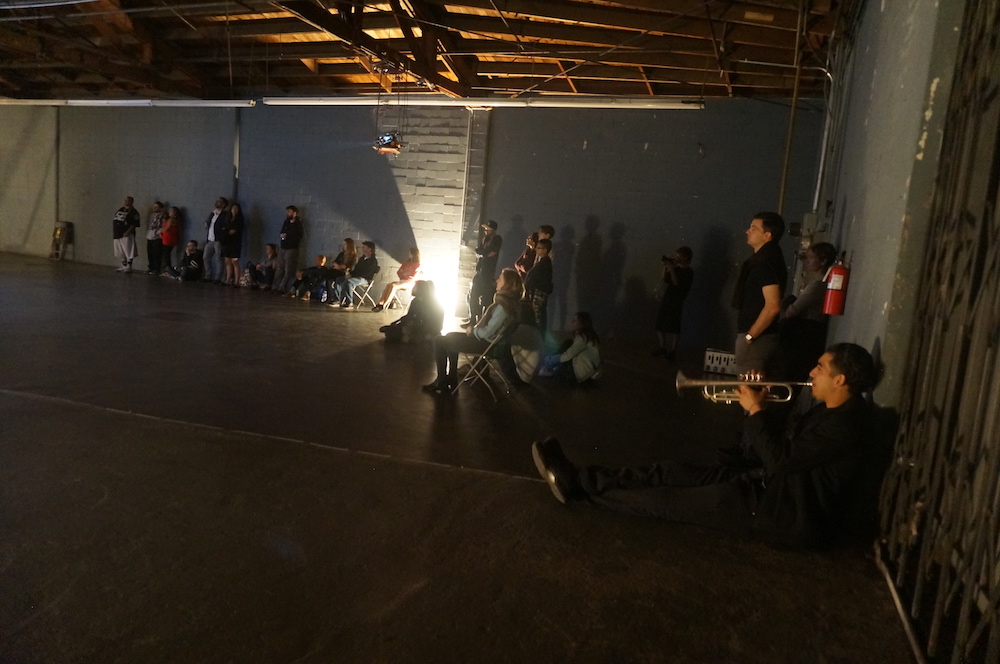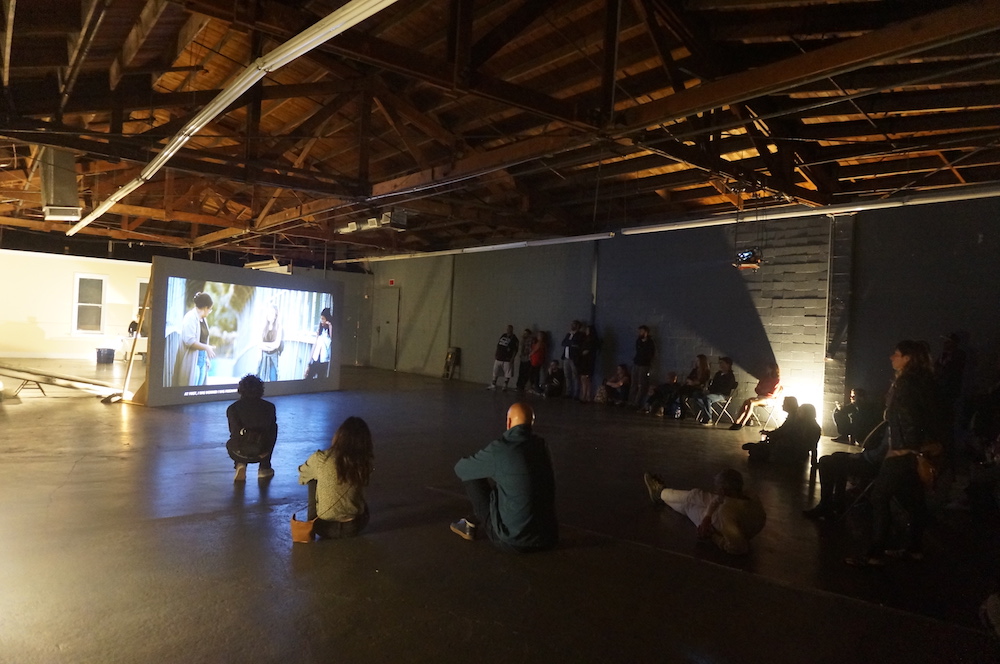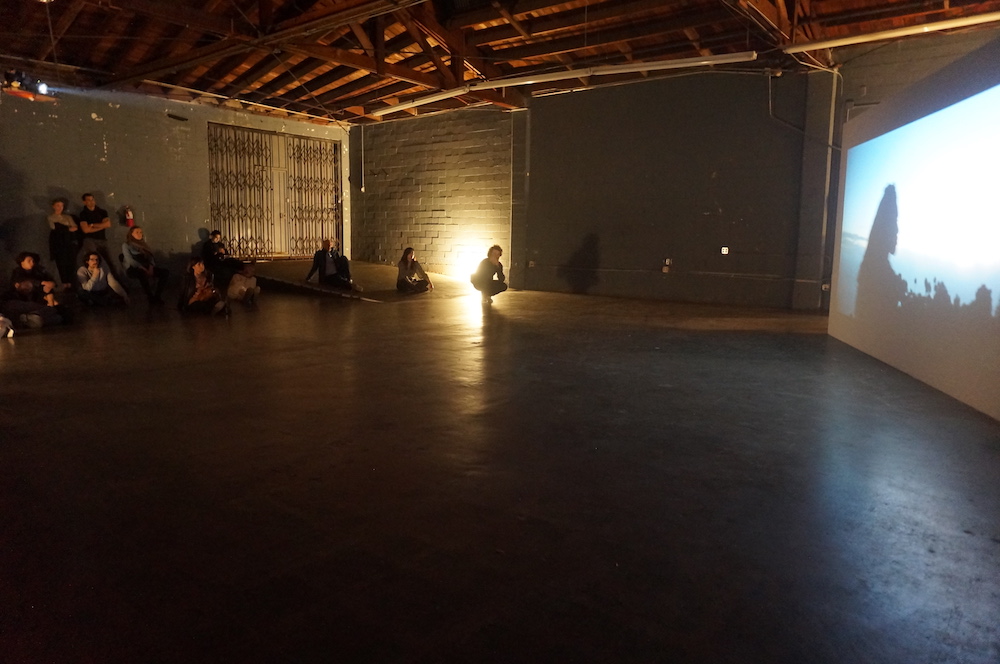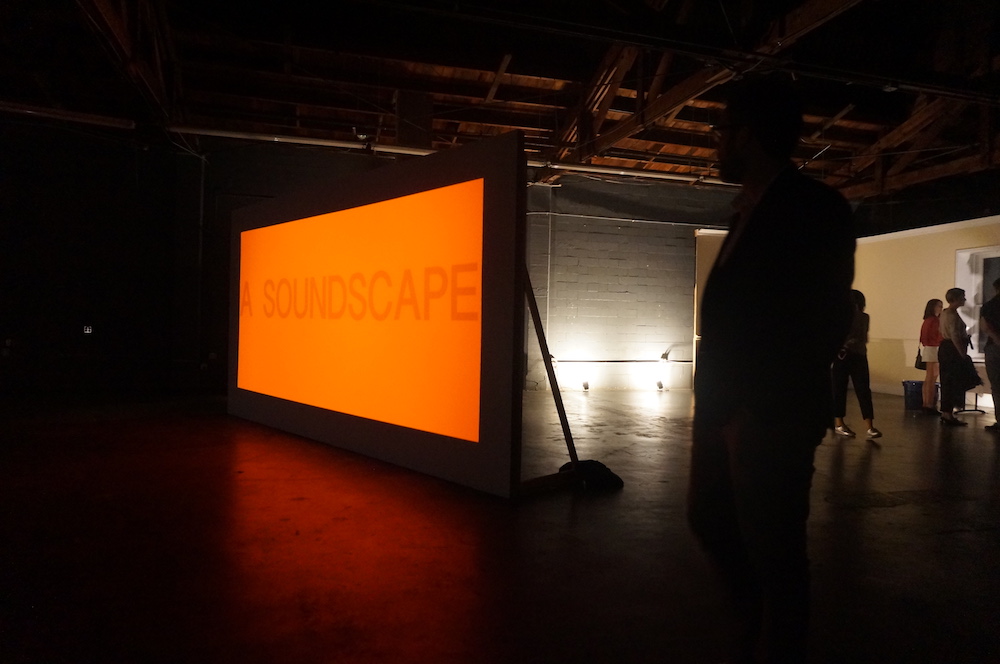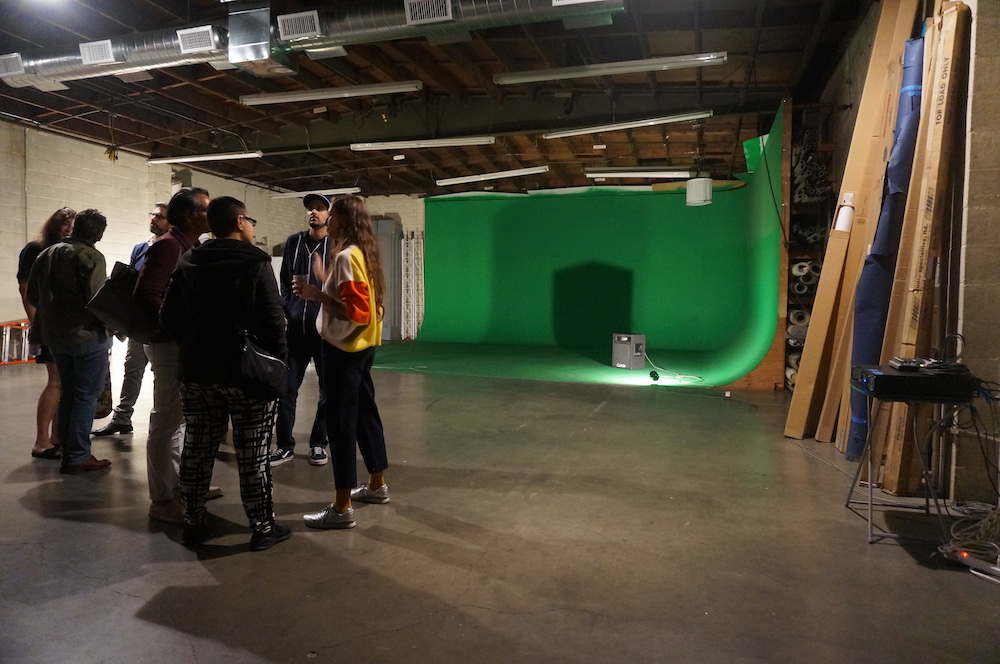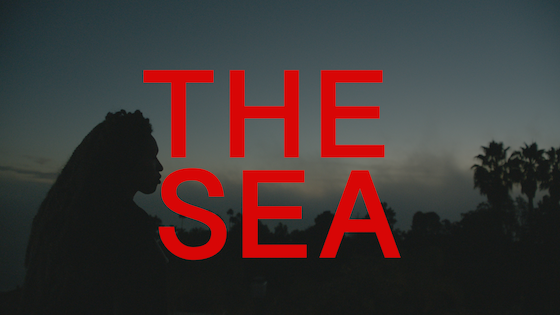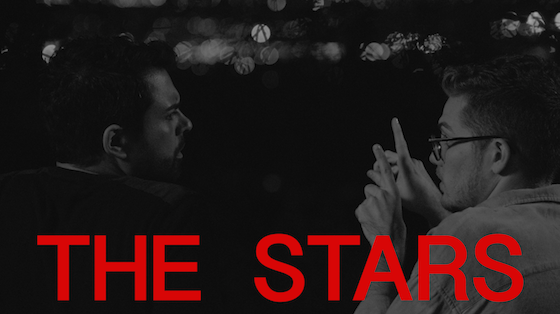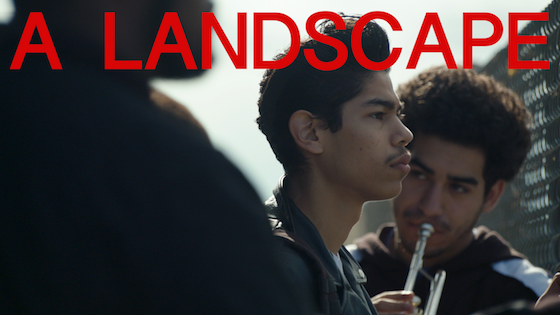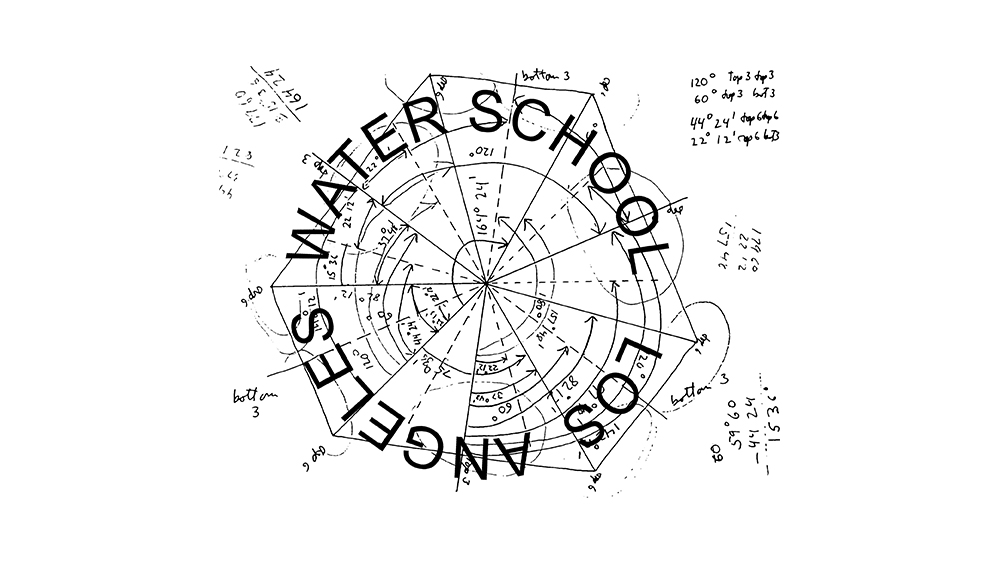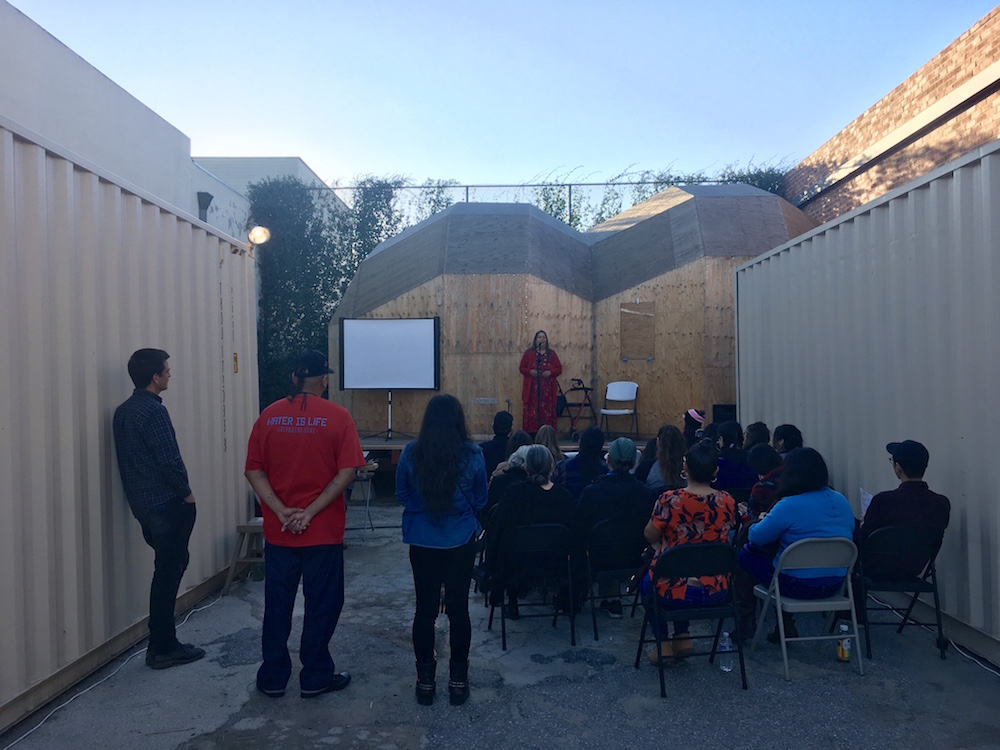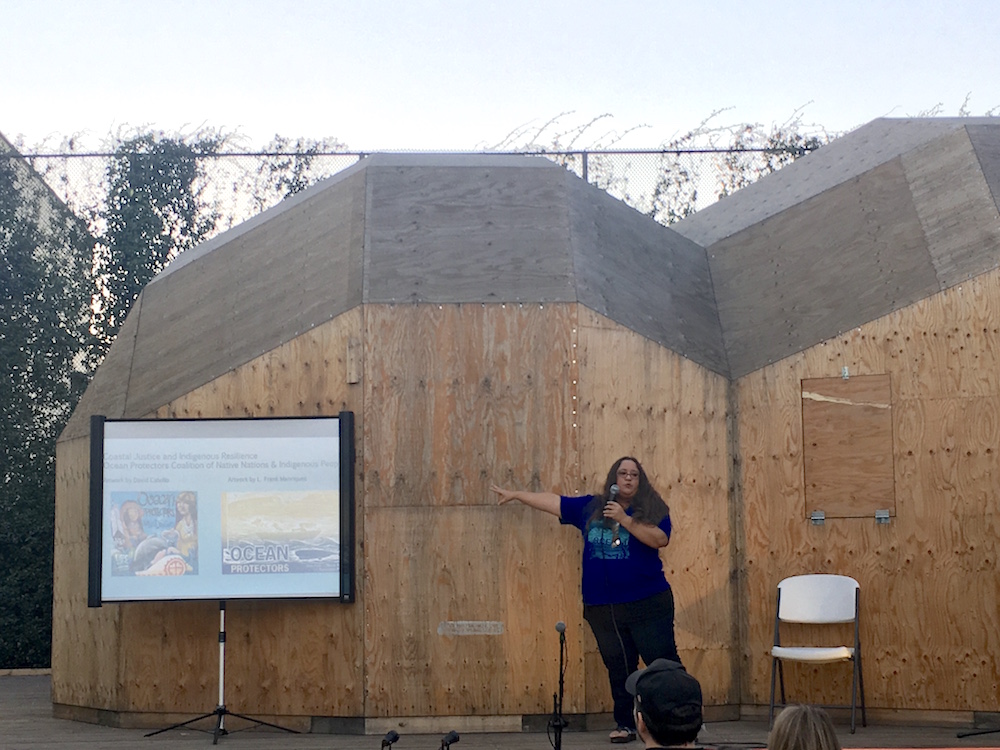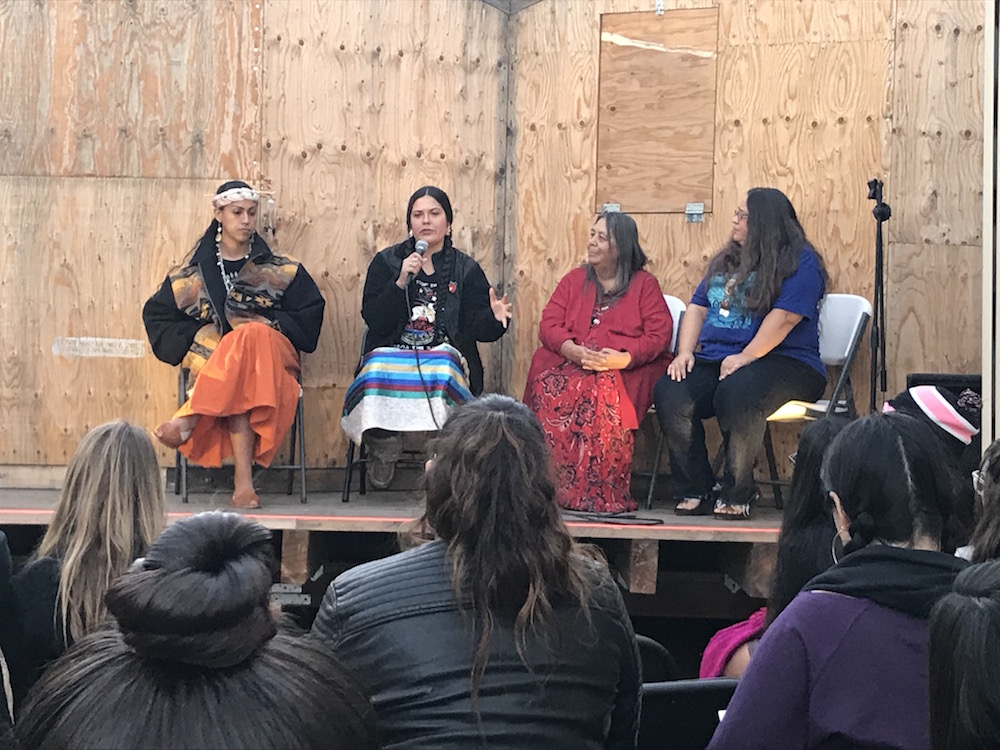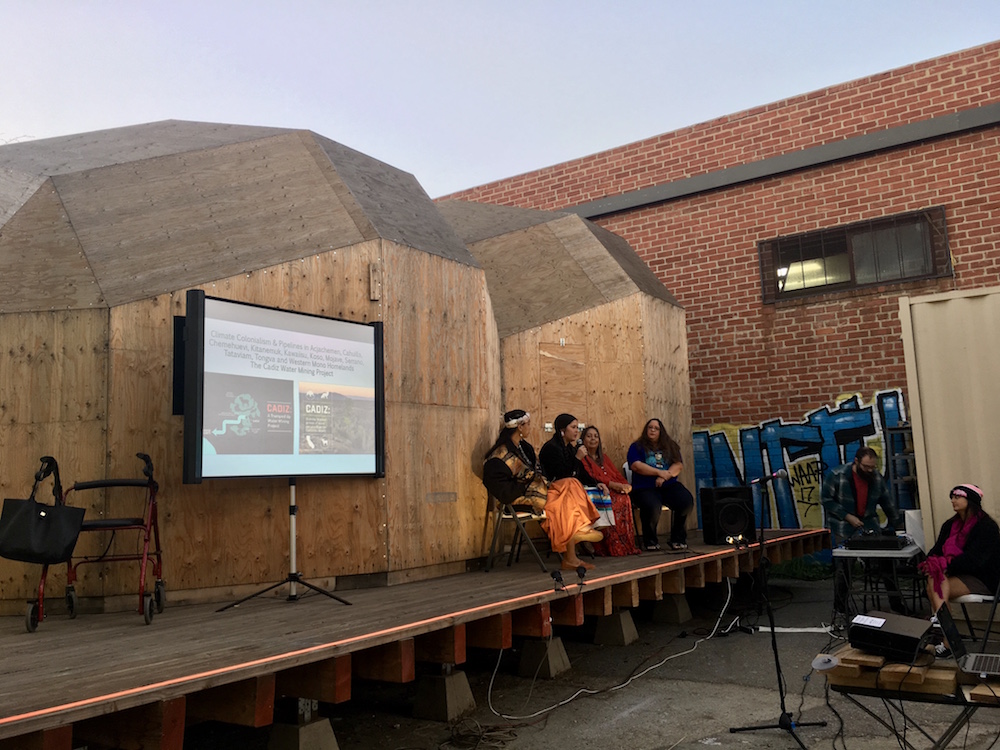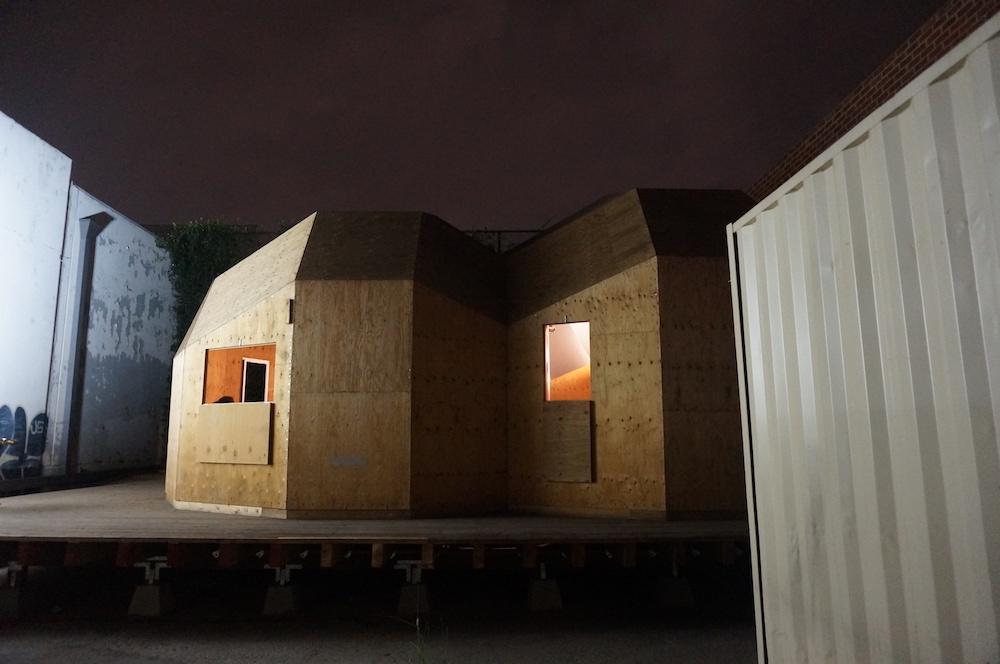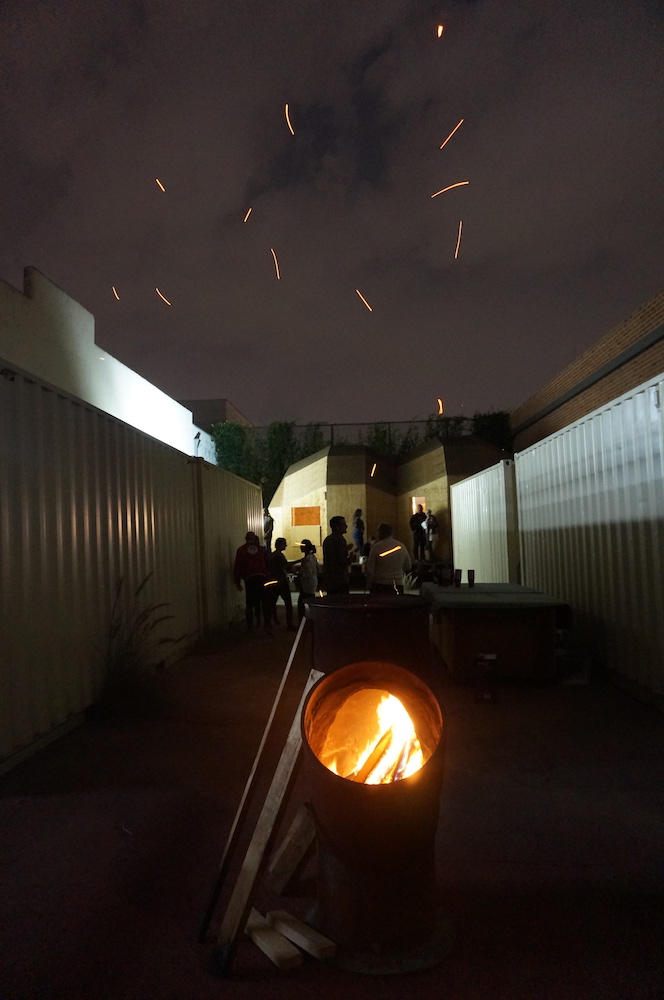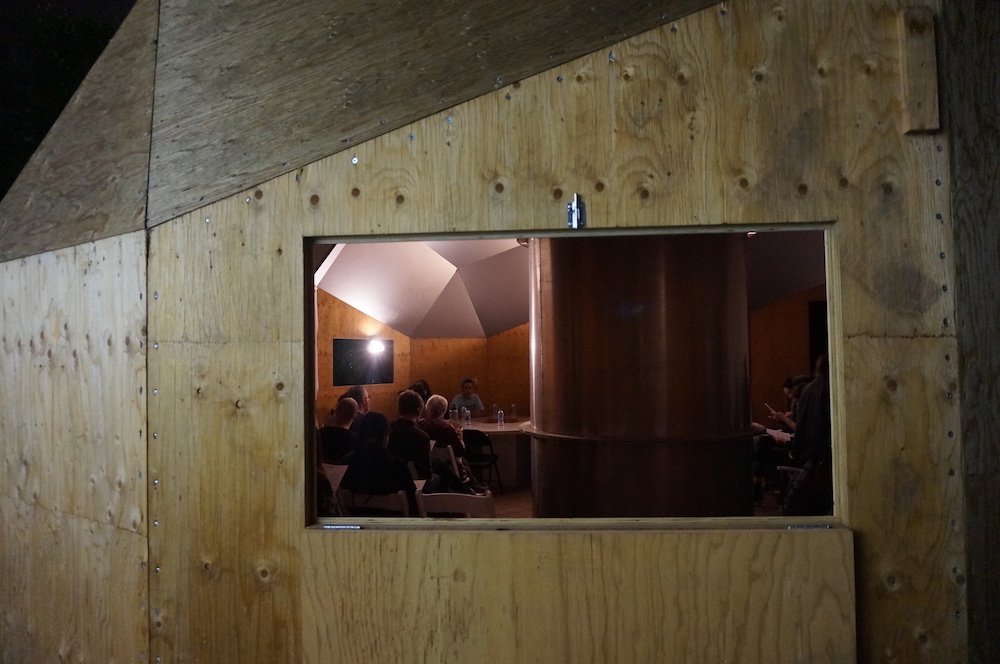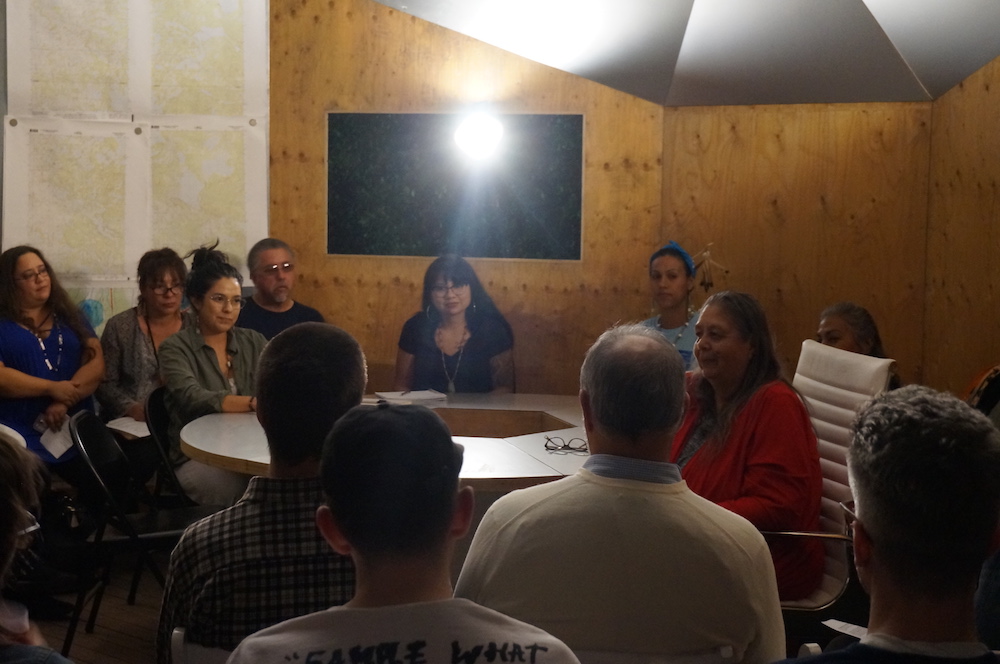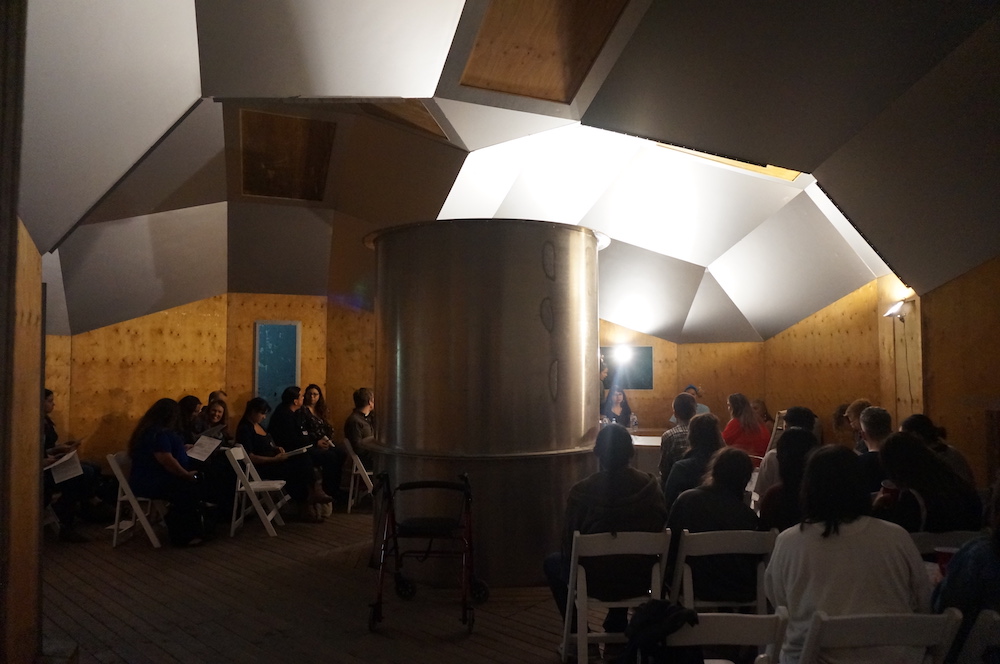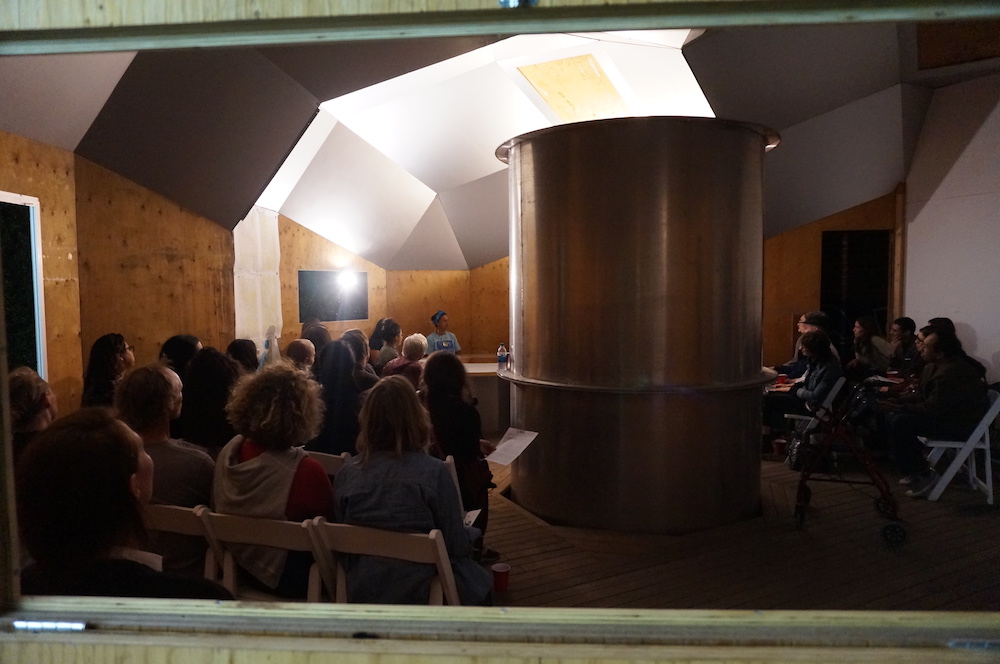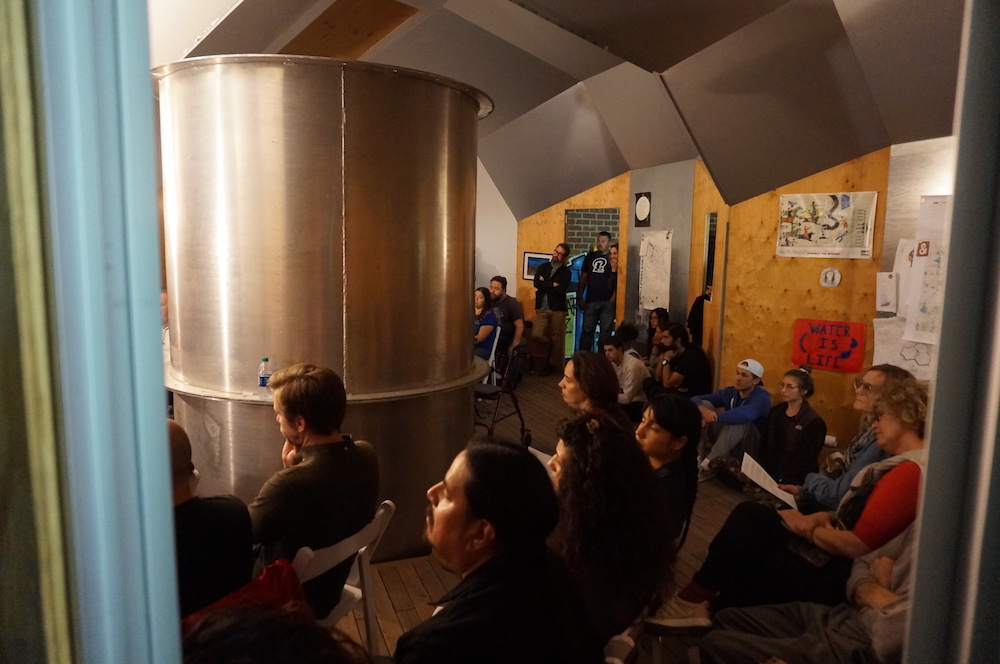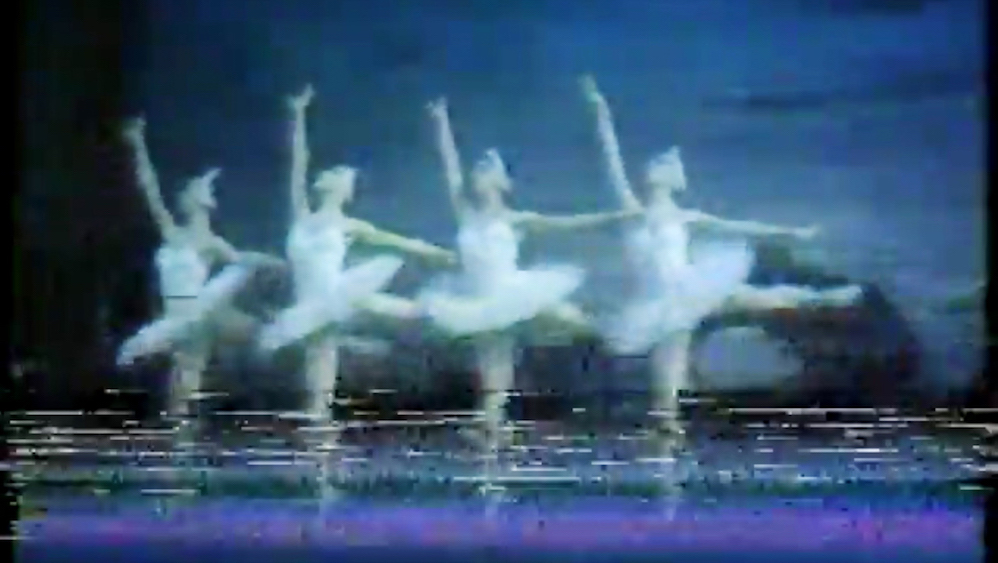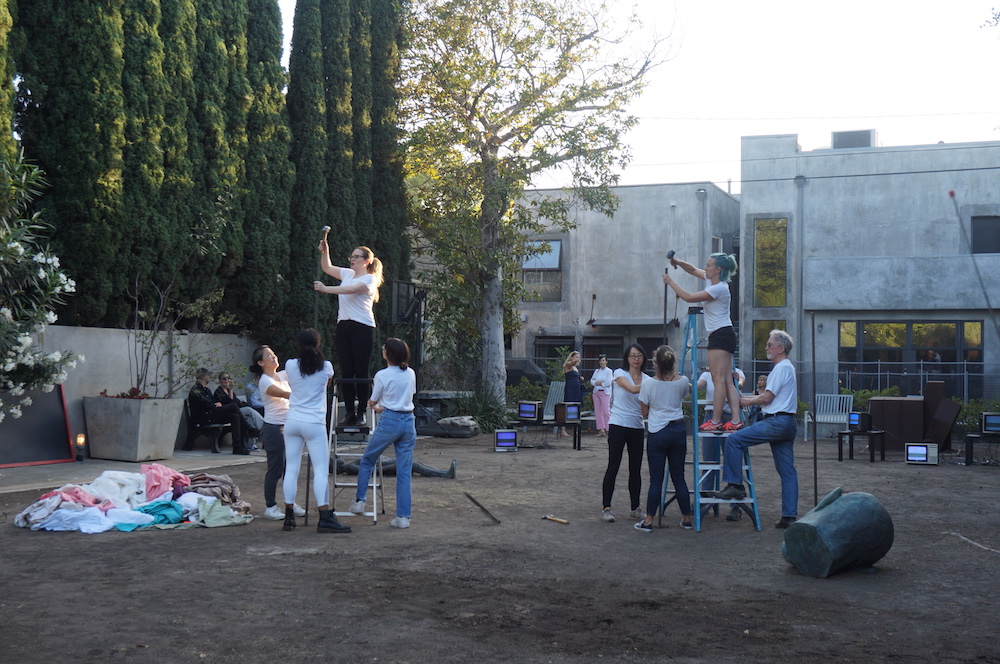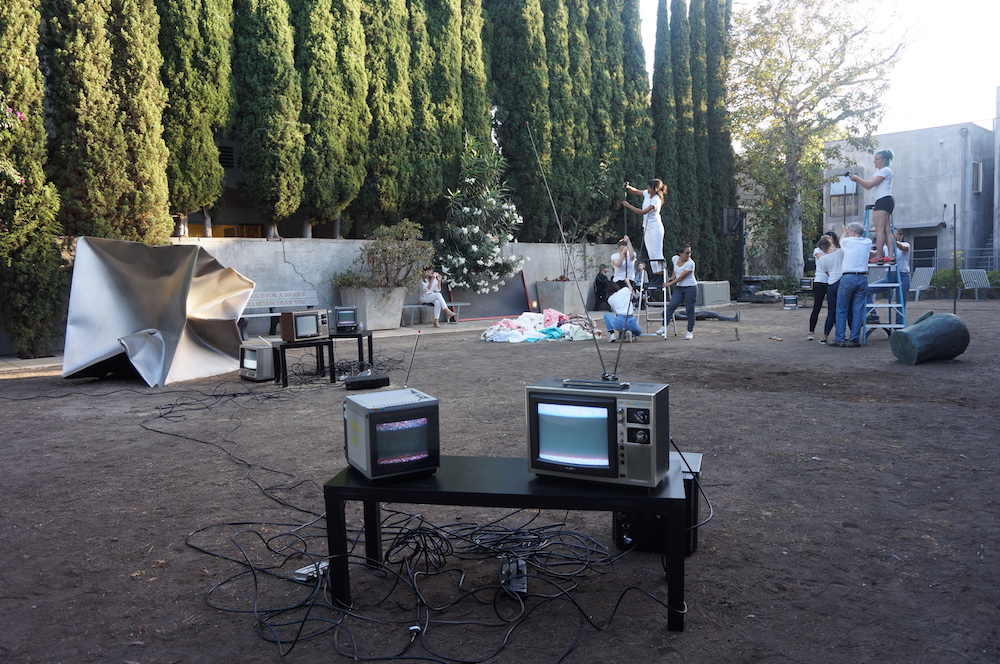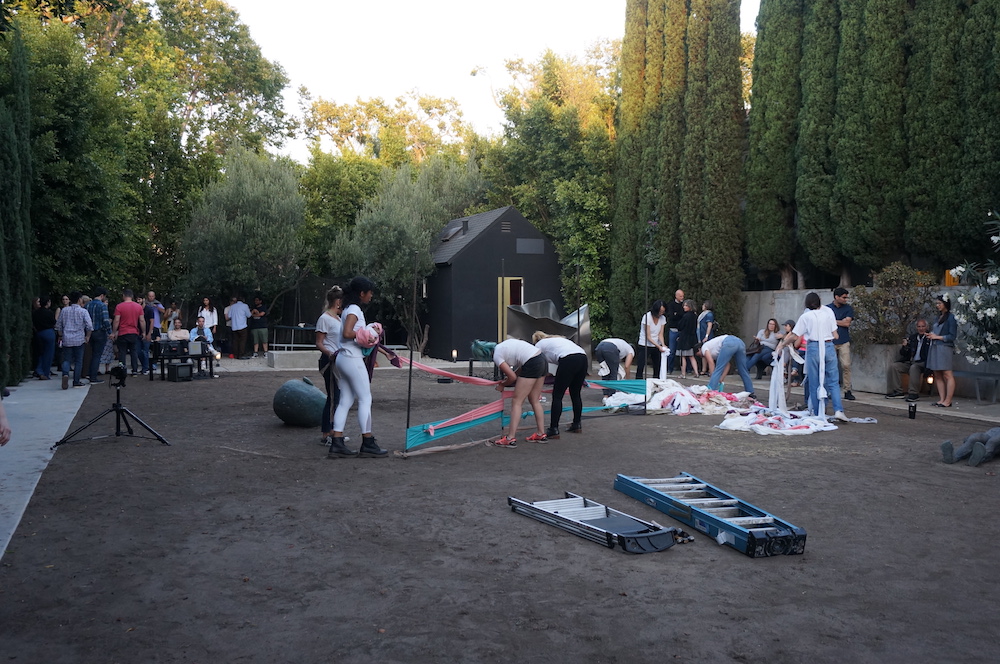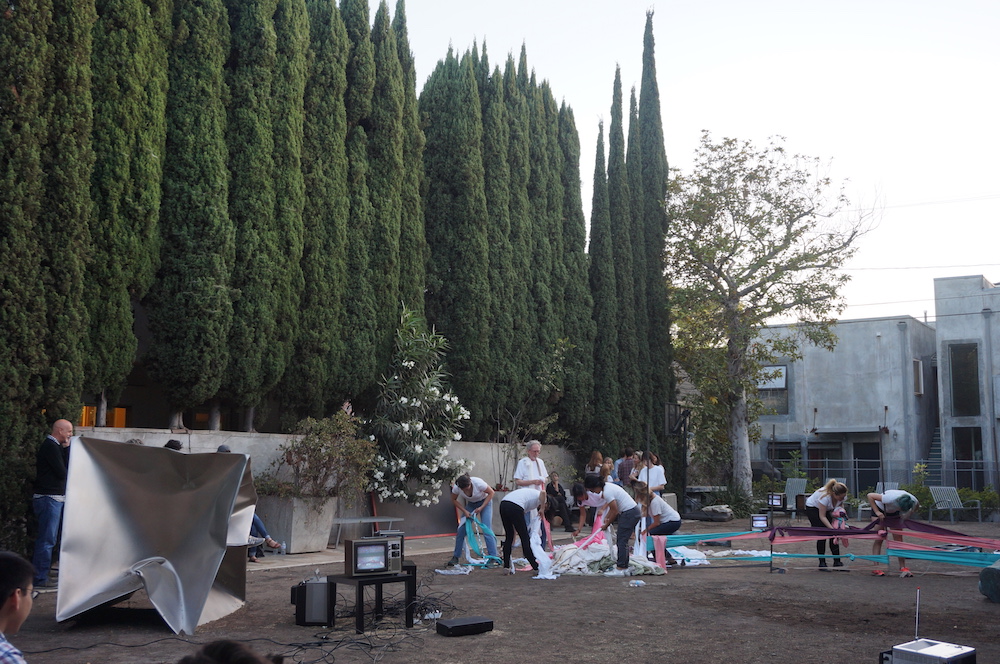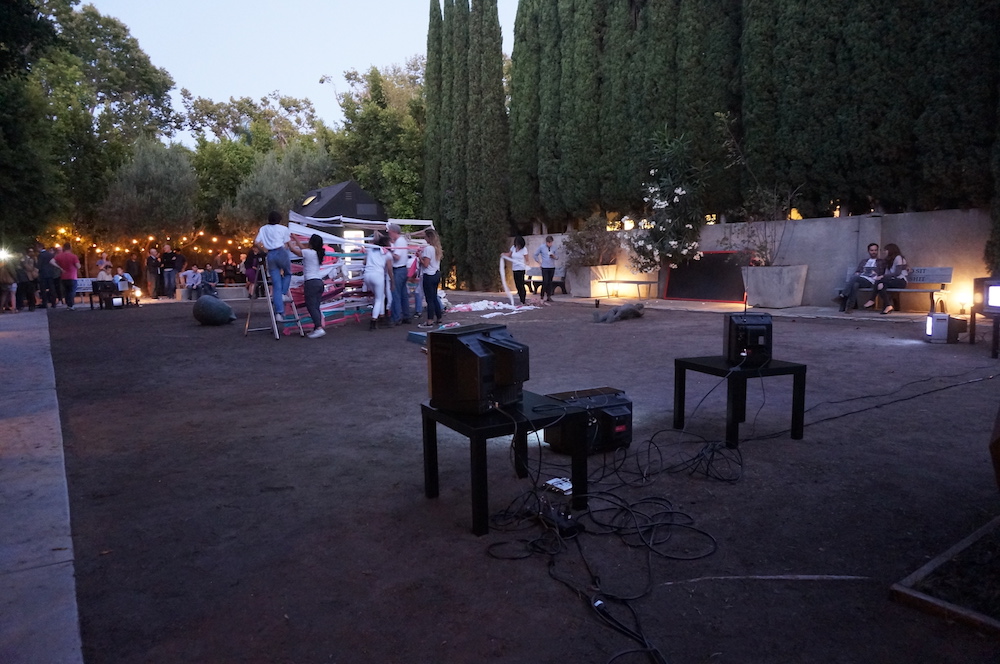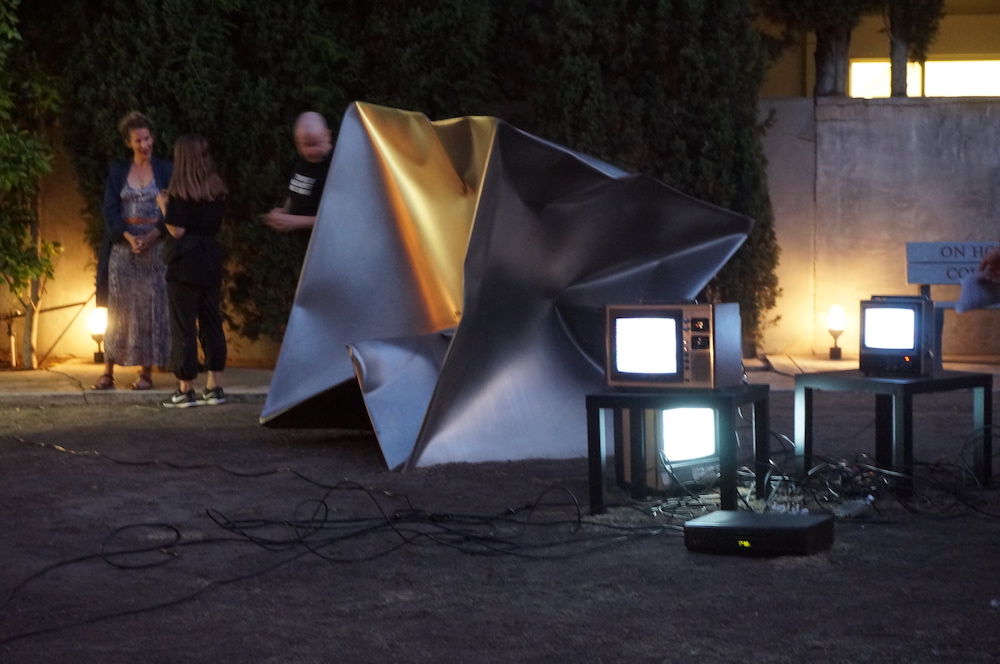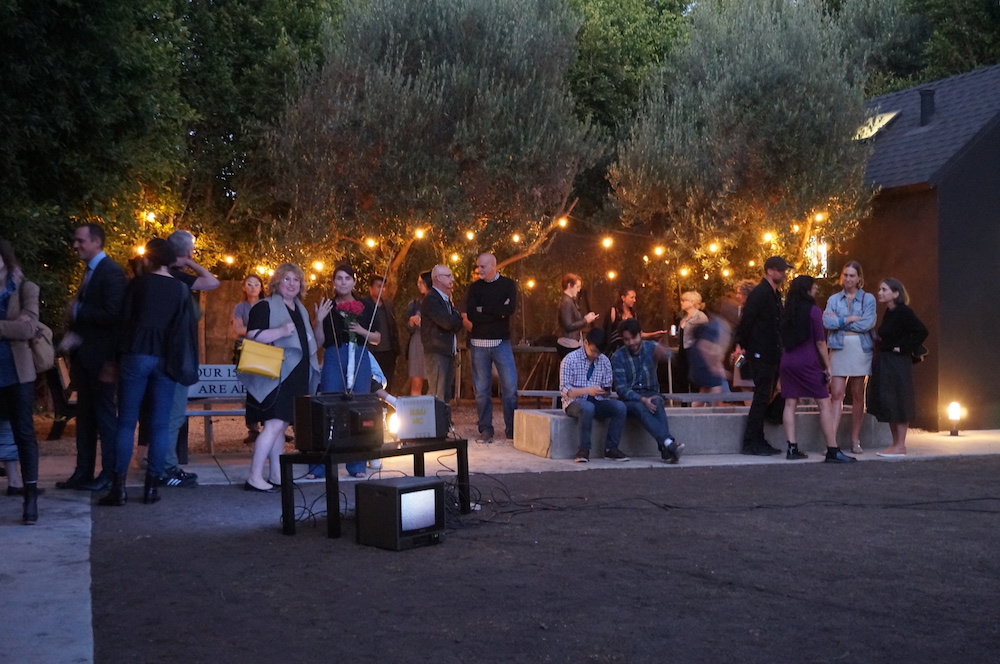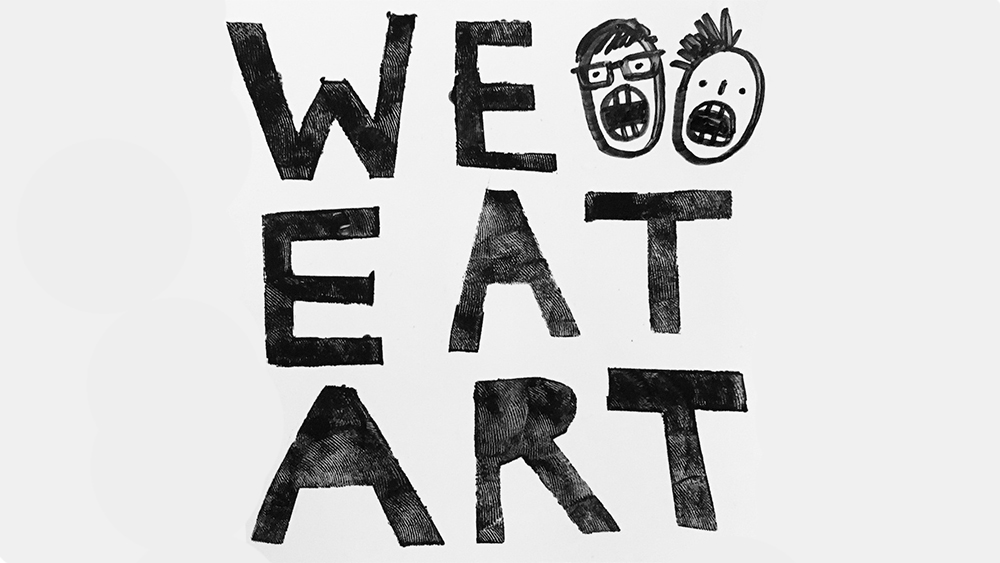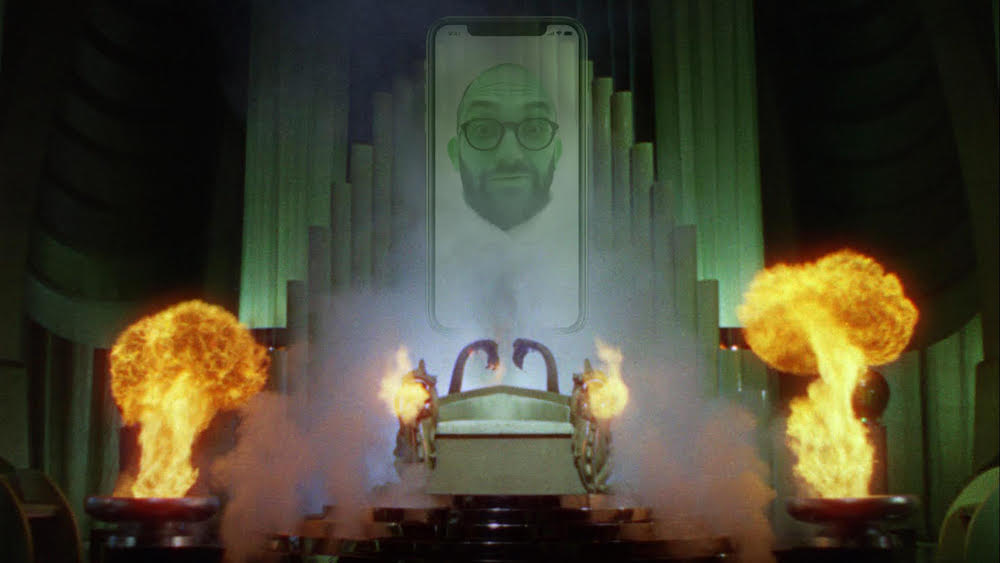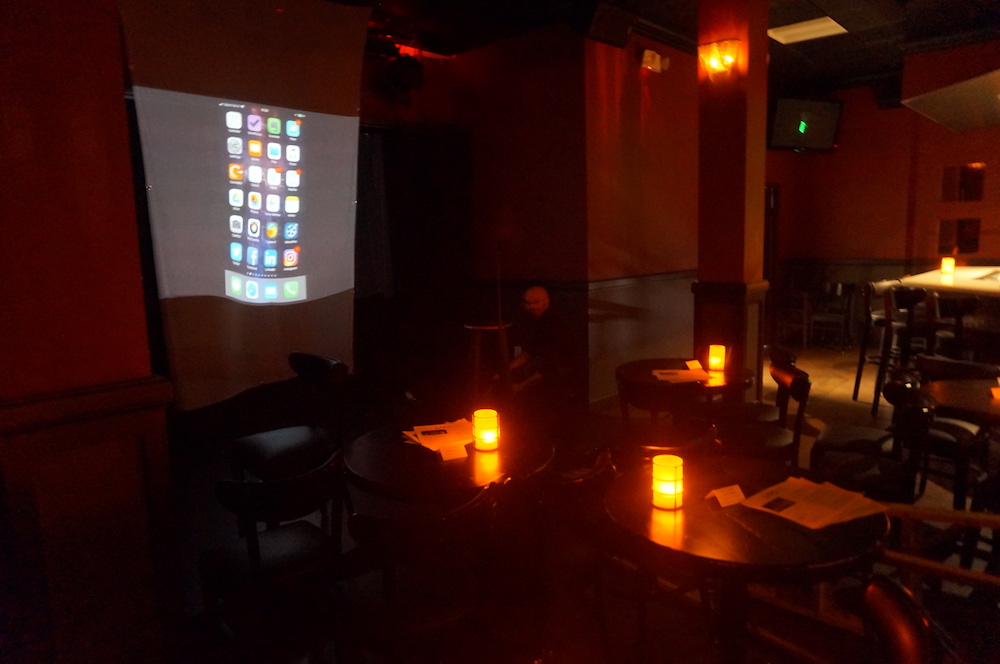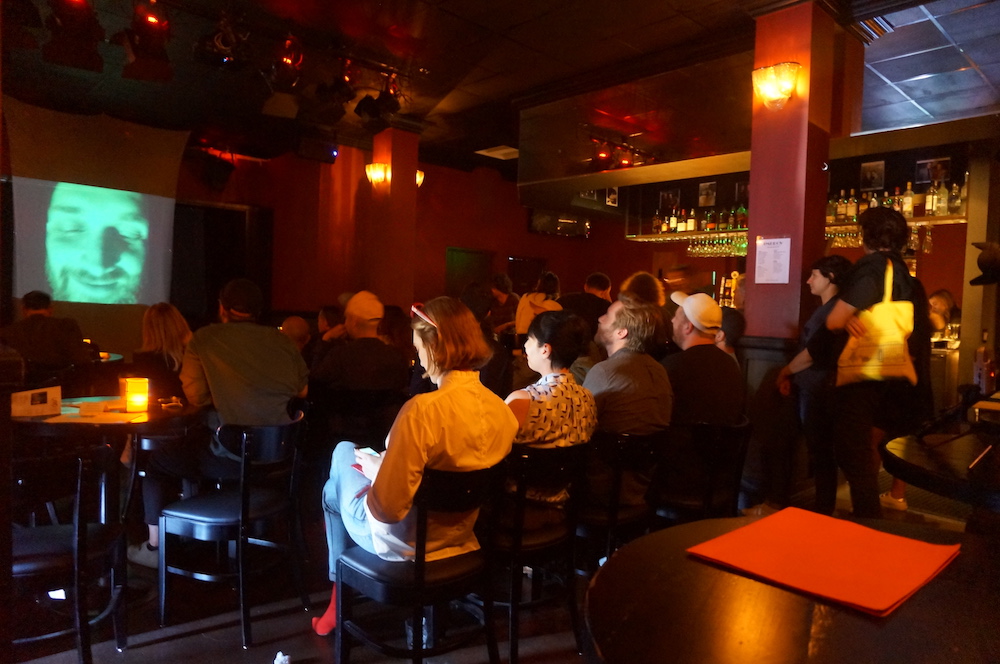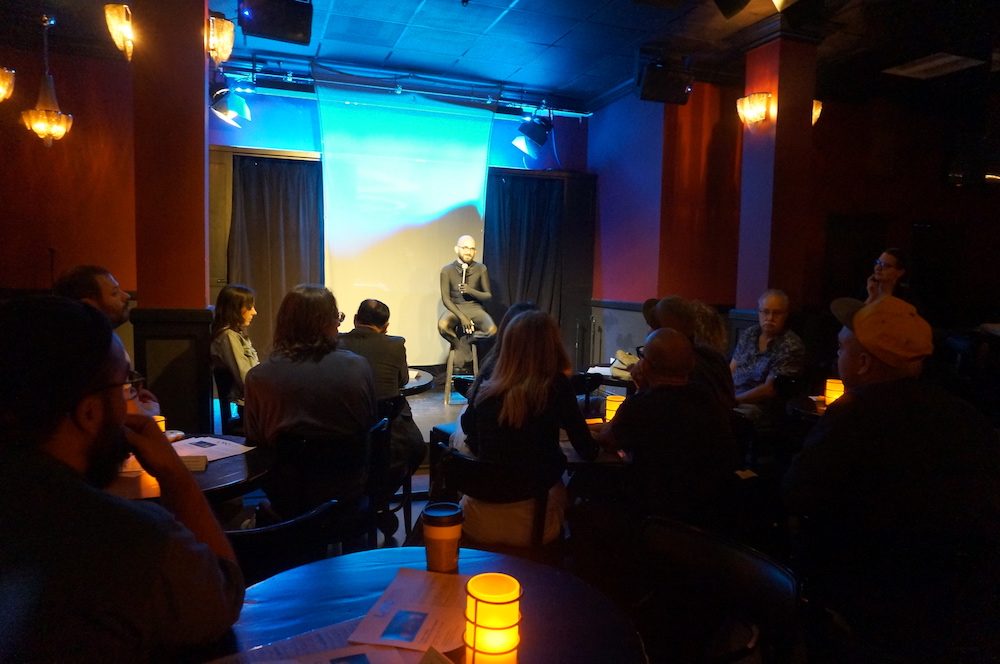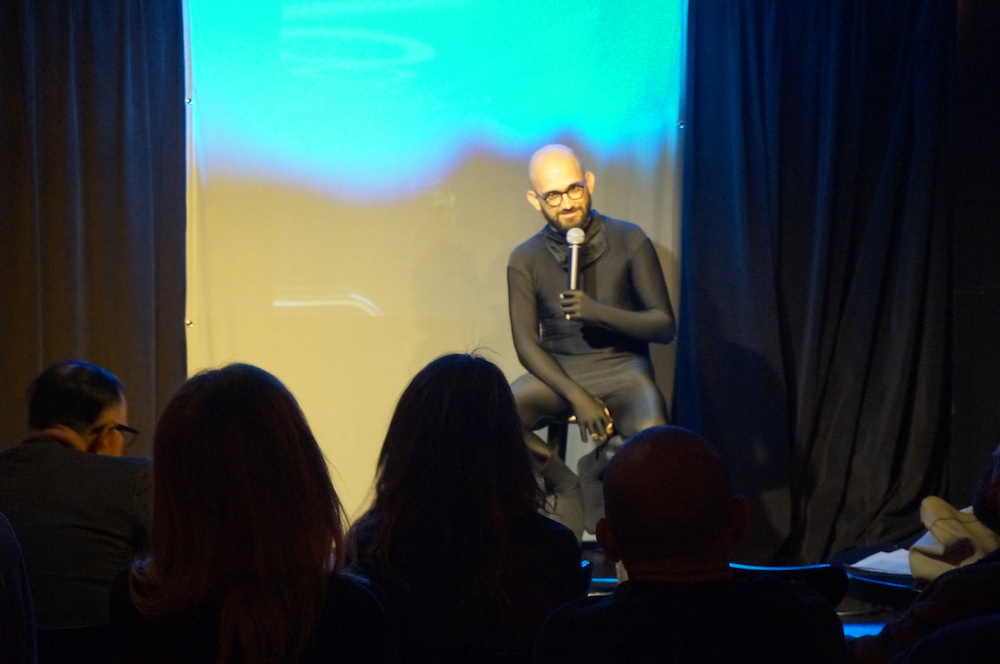Films will be available for viewing through January 10, 2021.
Frame Rate: Gabriel Madan, Legacy Pipebomb, 2019 (runtime 1:01:18 min), and Puppet Show (4.19.2015), 2020.
What do wrestling (Extreme Championship Wrestling, or ECW) and steroids, Nancy Grace, Willie Nelson, and Janis Joplin have in common? In his video Legacy Pipebomb, artist Gabriel Madan layers these seemingly disparate figures and subjects, with personal interludes including a text-to-speech reading of one of his sister’s blog entries detailing an accident with her daughter; a recording of his father singing Nelson’s “Angel Flying Too Close to the Ground,” at his daughter’s (Gabriel’s sister) memorial, with Madan singing over the recording; and a phone call between the artist and his mother in which he asks her to sing Joplin’s “Mercedes Benz.” The video also introduces the concept of Kayfabe—the performed fictional entertainment that is the hallmark of wrestling—and focuses on the 2005 ECW One Night Stand match between two hugely popular wrestling figures—Eddie Guerrero and Chris Benoit. The lives of both wrestlers ended tragically: Benoit killed his wife and young son, then took his own life and Guerrero died of a heart attack from complications due to extended drug use (steroids). As the match continues, artist D’Ette Nogle’s calming voice reads from a transcript of an episode of Headline News’s Nancy Grace Show, in which Grace attributes the tragic incidents to doctors who over prescribed steroids and painkillers to the wrestlers. Nogle’s soothing tenor is a stark contrast to Grace’s shrill accusations and hyperbole, adding another layer to this club sandwich of a narrative. This unlikely mix of the public spectacle of wrestling as entertainment with personal and public tragedies is unsettling, unnerving, and deeply compelling. Madan’s short and equally personal video, Puppet Show (4.19.2015), 2020, will lead off the program and there will be a Q&A with the artist immediately following the screenings.
About the Artist Gabriel Madan was born in 1993, in Miami and lives and works in Los Angeles. In August 2020, he graduated from Art Center School of Design and his graduate exhibition, Sana Sana, was presented at the PPR Gallery & D8 at Art Center. He received his BFA in Printmaking from The University of Miami.
Frame Rate: Gabriel Madan is organized by LAND’s Curator at Large, Ali Subotnick.
Frame Rate is LAND’s screening series, presenting film, video, and moving image works in site-specific contexts. Reflecting the diverse ways contemporary artists engage with visual culture, Frame Rate allows audiences intimate access to artists’ works and creative process. Unlike conventional formats, Frame Rate invites artists to propose and present new work, works-in-progress or ideas that comprise the multifaceted influences informing their creative practice.
This screening is made possible by a grant from the City of Los Angeles Department of Cultural Affairs.

On December 11, 2020, LAND screened two recent films from Gabriel Madan, Legacy Pipebomb, 2019 (1:01:18 min), along with one of the artist’s shorts, Puppet Show (4.19.2015), 2020, followed by a conversation between the artist and LAND’s Curator at Large, Ali Subotnick. An edited version of the conversation follows.
Ali Subotnick: So, Shahryar Nashat sent me your portfolio that had a link to Puppet Movie, and I watched it and I was like, “I gotta talk to this guy.” Then we had a great studio visit and you showed me an excerpt of Legacy Pipebomb (2019), and later I watched the whole thing, and I was really moved by how you connected these personal and public tragedies and tried to make sense of senseless tragedies. I mentioned to you after I watched it for the first time, that I thought of it like a club sandwich with all these different layers, so I tried to pick apart all the layers and I’d love for you to tell me more about your ideas for the layering. So maybe the meat of the sandwich is public and personal tragedy and making sense of a senseless tragedy. Then for the condiments like the lettuce, tomato, mustard, mayo and all that stuff there’s the Vince McMahon cold open of the wrestling match; the explanation of the term kayfabe; your explanation about a shoot being the opposite of a work; the Nancy Grace transcript, which is read by the artist D’Ette Nogle; the ECW One Night Stand match between Eddie Guerrero and Chris Benoit; you reciting the chorus of Bob Dylan’s song “Who Killed Davey Moore;” the text-to-speech reading of your sister’s journal entry about her daughter’s bike accident; the audio tribute to Eddie Guerrero; your father singing “Angel Flying Too Close to the Ground,” and then you singing over that; the phone call with your mom and both you and your mom separately singing Janis Joplin’s “Mercedes Benz;” and finally at the end you claiming the identity of all the different characters. So, club sandwich …
Gabriel Madan: I’ve loved it from the beginning because it seems to fit really well. It’s a sandwich that I’ve never liked to eat …
AS: Me neither! And, sorry to interrupt, but when you do get one, like at a country club, they put a toothpick through it, to hold it all together. So maybe the tragedies are the toothpick …
GM: It’s something like that. It holds it together, but you have to take it out and pull it all apart to divide it into these layers. I watched it the other day and was thinking about the different sounds being like this indicator of real vs. fake or public vs. private experiences. Like the wind breaking up my dad’s singing at my sister’s memorial or when D’Ette’s doing her voice over there’s no background, it’s all very clean and sort of removed [from the original context]. That strangeness of audio being disrupted or the fake performance of a wrestling match with the noise of a real crowd while everything else is removed and it’s like an echo chamber. There are definitely a lot of different layers and [maybe] the meat is the public and private tragedies. Eddie Guerrero’s death was one of the first deaths that I experienced as a kid, so for me it was almost like a private tragedy, but at the same time I didn’t know him personally.
AS: Were you a big wrestling fan?
GM: Yeah, for like three or four years nonstop I had been asking my parents to take me to a match. That ECW match in the film was the first one that I went to. It was wild. It was our first wrestling match, and we didn’t have any gear or any of the merchandise, so I think my dad was in like a Lacoste shirt and I’m in a T-shirt or something and all these people are screaming or throwing beer and it was sort of an out of body experience. At some point a wrestler jumped into the crowd like three rows in front of us. It was wild but yeah, we were there.
AS: How old were you then?
GM: I think I was 12-years old. It was very strange watching a wrestling match in person. It’s the most extreme, bloody, and violent sort of true American wrestling that you could get.
AS: Yes, it’s a very specific form of entertainment. That was one of my questions–why did you choose that specific match? But you answered that.
GM: I was thinking more specifically about those two wrestlers, Eddie Guerrero and Chris Benoit, and their family tragedies and how those came to be, and the difference between the two. One committing a heinous double murder suicide and the other one dying from a heart attack from a drug overdose, and both having tribute shows and how does a tribute show for a public figure look different than a memorial for a sister or daughter? How do they differ, but also that strangeness of paralleling my sister’s death with these two other deaths that are very different?
AS: How much time had passed after Guerrero and Benoit’s deaths and your sister’s death?
GM: My sister died in 2015, so it was ten years after Eddie Guerrero died.
AS: How important is it for viewers to know the details of those personal circumstances?
GM: That’s something that I go back and forth on, like how much to reveal. I think that was one of the questions that I tried to tackle with that last line in Puppet Show (4.19.2015) (2020), “This is where my sister died.” And I don’t really acknowledge that in Legacy Pipebomb. The only time it’s mentioned that it’s for my sister is when my dad’s introducing the song that he sings at her wake …
AS: So, you kind of need to know about your sister…
GM: Right or that’s the pipe bomb, right? That’s my real life interrupting this kayfabe work of a video. Like what part of the video is a real presentation? And asking D’Ette to read Nancy Grace’s transcriptions, which are these hyperbolic, exaggerated takes on the news and D’Ette contributes such an empathetic and honest reading of that same text and it changes the tone. I think that was really important for this. More so than telling viewers that my sister died. It’s more about changing the tone of death. I was trying to understand it a little bit better. It had been almost five years and it was around her birthday last year when I started making this video. So, I was thinking about her and these other things at the same time and wanted to do a video that was different from anything that I had done before. I told myself, this is found footage, I’m not going to edit it at all. I’m going to pause it at certain places and let it rest.
AS: Yeah, with those moments at, when there’s just text on a black screen and you are speaking … again, you’re playing with different tones. And then when you give us an arresting image of the wrestler’s frozen, mid-action, and the audio doesn’t match up with it at all, it heightens the tension. It operates on these levels that evoke different reactions and takes the viewer on a bit of a rollercoaster, going through the different layers of the sandwich. [laughs]
GM: Totally [laughs].
AS: Can we talk a little bit more about kayfabe? It’s a term I wasn’t familiar with. Is it specific to wrestling and where did it come from?
GM: I think so. I don’t really know the terminology all that well either, except that it’s the scripted portrayal of a character. So, like I just saw the Undertaker recently retired.
He’s a sort of Trumpian dead guy undertaker. They’re all out of their mind weird. Like why would you think to make a dead guy as a wrestling persona? And he comes back from the dead and he gets buried again. It’s very weird to keep up that portrayal. But this need to keep that persona up in real life seems to have fallen away now. It’s impossible to keep it up. This guy’s doing interviews and wearing Trump hats and he’s not the character anymore, it’s the real person coming through.
AS: I was wondering if you thought that the characters that Benoit and Guerrero were playing had some sort of role in their tragedies, aside from the steroids and painkillers?
GM: I think so, yeah because you know they had to take these steroids to maintain this sort of lifestyle and fight through injury and recover and all these things. They did an autopsy on Benoit after his death and he had such severe CTE and his scans looked like those of a 90-year-old with severe dementia. So, to a degree, the things that they needed to do to maintain these personas for television and for the fans and all that stuff play a role in their deaths because they had to take these drugs to compete and there are studies on CTE and its effect on violence …
AS: But do you think that they got so caught up in the aggressive and violent personas that they stayed in character when they went home or took on the violent nature of their characters?
GM: Yeah, it’s hard to say how much crossover there is. I mean it’s strange when you think about Chris Benoit’s nickname, which was “The Crippler.” So yeah, probably to some extent they take some of that home with them. I can’t imagine that it wouldn’t stay with them to some degree.
AS: I guess it’s all speculation at this point since they’re not around to talk about it. OK that Vince McMahon cold open. Is that typical of one of those matches? I’ve never seen anything like that. I mean the whole set up and the terrible acting …
GM: Yeah, the terrible acting is the best. One of the wrestlers in the hallway completely breaks character and he ended up getting fired because he was smiling, and it broke from the tone that they were trying to portray
AS: Ha ha, because it felt so real?!
GM: Yeah no one’s following this guy and somehow there are cameras set up in the driveway and the car explodes and no one comes running to help or anything.
AS: And when McMahon grabs the door handle it’s so deliberate and staged.
GM: So, staged, you can almost see him thinking. Like you see him about to put his foot in, and then he realizes that he needs to wait a second, so he puts his foot back. It’s so easy to isolate and identify his thinking about his “acting,” especially when you frame it inside of this black screen, it kind of reveals all the nonsense.
AS: And it’s the perfect way to start Legacy Pipebomb by highlighting artifice and spectacle and the difference between what’s real and what’s fictional.
GM: Yeah, I think that almost … going back to the sandwich, the meat is spectacle. It can be a true spectacle or a fabricated spectacle and I think that that thread runs through the entire piece.
AS: Yeah, and it demonstrates the variations of spectacle and how to present it. OK so we talked about the kayfabe …
GM: Yeah, even pipe bomb from the title, it’s supposed to be when someone actually … So a shoot is something that’s supposed to be portrayed as real and, kayfabe is something that is supposed to be known as fake and a pipe bomb is supposed to be something completely spontaneous, it’s real, but it’s scripted as well, like everything in wrestling from start to finish. There’s even the terminology that says this is real, but actually it’s a scripted word for reality. Pipebomb. The pipe bomb is the rumored “only really real” shoot given by C.M. Punk where he trash talks WWE and McMahon. It turns out this genuine real shoot was actually scripted and a planned work.
AS: Going back to the layers, when you talk about how the shoot is the opposite of a work, were you trying to make a connection between how art is fiction, yet an art object is also referred to as a work?
GM: Yeah, and very heavy-handed, I keep repeating, “It’s a work, the opposite of a shoot is a work.” So heavy-handed…
AS: Is language something that you’ve always been interested in?
GM: To a degree yeah. I love word play and portmanteaus and palindromes, but the script from all the audio recordings [the wrestling match, Nancy Grace, my sister’s journal, etc.] dictated where things went in this piece.
GM: Yeah, the editing is super tight, and so key to connecting all the threads, just the way things unfold, and you go back and forth from one thing to another. What about repetition? There’s a lot of repetition of different phrases and people saying the same thing in different ways, but also you included some bloopers. Like when D’Ette recites her lines over and over again, it reinforces the ideas.
GM: Yeah, when D’Ette sent me the audio files my favorite thing was the … I can’t call them fuck ups because they’re so good. She’ll slip up a line and or something and then she’d whisper like shit or fuck, totally contradicting the seriousness and the tone of what she was saying.
AS: And that takes us back to kayfabe and breaking the fourth wall.
GM: Exactly. I mean I had never used a voiceover and I was responding to D’Ette. I was almost trying to mimic the way that she edited herself, so there was no sound, there was nothing else happening. But other things interrupted mine. At the beginning when I’m singing the Bob Dylan song someone came in while I was recording and I was just like, fine I’ll leave it in, it doesn’t matter, like this is the reality of me trying to sing a song that I don’t know as I’m looking at the lyrics in a karaoke video with this cheesy background and the lyrics are bouncing around while I’m recording. So, there’s a lot of repetition, a lot of mirroring. In a sense I’m trying to parrot D’Ette’s voice who’s also trying to overlay hers onto Nancy Grace and there’s a very strange sort of lineage in there. And another thing about repetition, the match restarts [in my video] and that sort of took its cue from the announcer saying like you can either tap or have your neck broken, and I chose to just start the match over so that had to play through, I think. Like you’re given this option to do this or do that but, there’s always this third option to start over and see what happens.
AS: And what led you to use the text-to-speech program for your sister’s journal entries?
GM: It’s something that I used as a stand-in for my sister’s voice previously, and these are the only remaining texts of hers that I have access to. The entry that I put through the text-to-speech program recounts an incident when my sister and her daughter, my niece Zoe, were at a farm where kids come and take care of horses and do shooting or zip lining. And for one blog entry, my sister wrote about this event where Zoe is riding her bike as fast as she can back but at the same time holding an ice cream cone, the ice cream cone slips and falls and then Zoe tumbles over, and crashes and my sister writes about witnessing this scary experience for both of them. I think my interest in language comes from my sister. She was such a great writer, and she had a very interesting way of putting words together that I never could, at least when I tried writing about her, but through audio and video it was easier.
AS: One of my other questions, which I think we kind of covered, but I was curious if you feel that it is important for viewers to know who all the different characters are? Is it important to you that viewers are familiar with the wrestlers or know or understand that we’re hearing your parents?
GM: I think what’s important is that there’s evidence of a closeness or some sort of connection with a person they might not know is my sister or my mom or my dad.
AS: Here’s a viewer question: “The longer work [Legacy Pipebomb] feels both linear and nonlinear, grappling with the fragmentation of memories. What was the tone toward death before creating this work, and what is the change of tone you have experienced during and after as well as a sensationalized versus an intimate tribute? Can you talk about your decision on the endings of each of these videos?”
GM: The decision on endings is probably something a little easier for me to get to. At the end of Legacy Pipebomb I say, “I am Nancy Grace I’m D’Ette Nogle,” and so on. I sort of claim these characters for myself, and I have been thinking about this video as some sort of a persona building and these influences on me as an artist and as a person and wanting to associate myself with either the things that those people spoke in the video or how they’ve affected my life in some way or another. And that repeats too. I read it all the way through and then I read it all the way through again, with no credits.
AS: It’s a powerful ending. It reminds us how easily our circumstances could change, and we could have been any one of those people. One thing that happens in your life can change the trajectory or influences in your life…
GM: Totally. That’s always something that’s amazed me, like I could be this person, or I could be that person. Like, how does this play out? And it’s obviously the people that are in your life and the people that you look up to or don’t look up to and their influences on you and in a way I’m all those people at the end of that video. Puppet Show ends very, I would say awkwardly. I drop a very heavy last line and then just leave the room. And I say I, but it’s the puppet obviously.
I do want to see if I can answer the first part of that question about the tone towards death. Experiencing death, especially in 2020, and seeing numbers rise every day, I don’t know how to even calculate that or register that. I think the only sort of clear tone that I had was more about post-death. People would tell me, “Oh you know she’s in a better place,” which is such a load of shit. The better place is being alive and being able to be with loved ones and make work and write and have all these experiences. I think people can be dismissive of death and that’s such a shitty way to say it, but people have such an awkward relationship to death, and they don’t know how to process it and they don’t know how to help other people process death. Saying she’s in a better place or something like that doesn’t do any good.
AS: And we get desensitized.
GM: Exactly yeah. Like saying [of Covid-19 fatalities] it’s a 9-11 every day. There’s no good way to do it and I think maybe that’s the tone towards death. There’s no good way to die. There’s no good way to lose somebody.
AS: I also think the difference between experiencing the tragic death of a public figure that you don’t have a personal relationship with is so different than losing a family member. That’s gotta be the hardest thing to go through.
GM: Yeah, and it’s been the hardest thing for my family too. 2020 was the five-year anniversary of my sister’s death and it hasn’t gotten any easier for any of us. It’s always there. It’s funny that Eddie’s public death still affects me. Still when I hear the song that they played as a tribute song suddenly I’m crying over a 12-year-old me experiencing death. Even a public death can be intimate, in the same way that [John] Baldessari’s death was intimate for me. I think that sort of lingering loss or loss visualized… Like … Puppet Movie has had an impact on many other people, not because they knew my sister, but for knowing that feeling of losing somebody. Like if D’Ette is a stand-in for Nancy Grace, someone else’s intimate death is a stand-in for your personal experience with death as well.
AS: I think it’s generous of you to share that and make yourself vulnerable. Here’s another question: “I’m curious about your editing process. It seems like the audio is almost like a set script, material that you knew you wanted to use and then the image is more consistent, repetitive and gets used in a slightly different way with frozen moments and periods of stillness and is purely wrestling in imagery. Could you talk about your decisions with regards to that video image? When was it important to let the action play out and when was it important to see a still image important for an extended time?”
GM: Now, looking back, it feels that there was a set script of like, here are the things that I need D’Ette to read so that I can interject with a song or something like that. Where it’s like the story takes place over something that’s happening in the video. Yeah, there are a few moments in the video that get paused. I think there’s one where [the wrestlers] are falling off the top of the ring, they’re flying in the air, and there’s this beauty in the pause and distortion in the video, which is a screen recording off my computer. And that comes out of my interest in video art and thinking about when a glitch or a pause happens, how does that either influence the audio or the audio influences the image? And the last freeze is when Eddie is about to tap out and D’Ette’s reading part of the script and the audio of my sister’s blog and then I sing and then the action comes back. That felt like, this is the ending, this is the climax obviously, and we’re going to sit on one image and let the audio be the guiding narrative here, like give space for the audio to do all that it can do. Earlier in the video, maybe it was OK to distract a little bit from the audio. There’s a lot of …
AS: There’s a lot to unpack and so it’s sort of a way of mediating in a way or giving people a chance to listen and to focus on the words.
GM: Yeah, it’s gotta work differently in those parts.
AS: What about the decision to keep the application window frame in, so that we know that you’re watching this on a computer?
GM: I don’t really know. It was a very easy decision. I loved how the computer was watching the wrestling unfold and I was just screen recording instead of giving you this footage straight up. There’s this separation from it being real action. I think more than anything I wanted that distance from the action to be really visible. Like you can see the play bar and the play bar doesn’t match up with the play bar that you’re viewing in the video.
AS: [laughing] yeah, I kept getting confused about the timing.
GM: Yeah, it’s like how are we still here? Like this has gone on for an hour and it’s moved like two minutes. It didn’t make sense. There was something about that time indicator that was a visualization of time that’s obviously passing in this DVD, that’s not passing in the time that you’re experiencing watching the video. There’s a disconnect in that time, and I think there are huge disconnects in time in the narrative of the piece.
AS: Yeah definitely, slowing down, speeding up … OK one more question: “Are the wrestlers Willie Nelson’s angels flying too close to the ground? They come crashing to the ground in real life, but with the pause editing you’re able to stop that even momentarily like a stay on death for a minute?”
GM: Yeah, I think that’s beautiful. It’s not what I was thinking, but it’s probably the only thing I’ll be able to think of now.

